#this is like the fourth version I made with three pictures and two headlines
Explore tagged Tumblr posts
Text

This is how the scene went, right?
#renfield#renfield 2023#renfield movie#this is like the fourth version I made with three pictures and two headlines#but he deserves all the rest now
238 notes
·
View notes
Photo
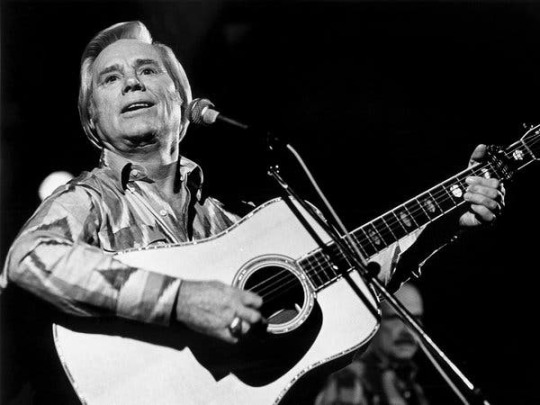
Today we remember the passing of George Jones who Died: April 26, 2013 at Vanderbilt University Medical Center in Nashville, Tennessee
George Glenn Jones (September 12, 1931 – April 26, 2013) was an American musician, singer, and songwriter. He achieved international fame for his long list of hit records, including his best-known song "He Stopped Loving Her Today", as well as his distinctive voice and phrasing. For the last two decades of his life, Jones was frequently referred to as the greatest living country singer. Country music scholar Bill Malone writes, "For the two or three minutes consumed by a song, Jones immerses himself so completely in its lyrics, and in the mood it conveys, that the listener can scarcely avoid becoming similarly involved." Waylon Jennings expressed a similar opinion in his song "It's Alright": "If we all could sound like we wanted to, we'd all sound like George Jones." The shape of his nose and facial features earned Jones the nickname "The Possum".
Born in Texas, Jones first heard country music when he was seven, and was given a guitar at the age of nine. He married his first wife, Dorothy Bonvillion, in 1950, and was divorced in 1951. He served in the United States Marine Corps and was discharged in 1953. He married Shirley Ann Corley in 1954. In 1959, Jones recorded "White Lightning", written by J. P. Richardson, which launched his career as a singer. His second marriage ended in divorce in 1968; he married fellow country music singer Tammy Wynette a year later. Years of alcoholism compromised his health and led to his missing many performances, earning him the nickname "No Show Jones". After his divorce from Wynette in 1975, Jones married his fourth wife, Nancy Sepulvado, in 1983 and became sober for good in 1999.
George Jones has been called "The Rolls Royce Of Country Music" and had more than 160 chart singles to his name from 1955 until his death in 2013. Johnny Cash once said, "When people ask me who my favorite country singer is, I say, 'You mean besides George Jones?'"
In 1990, Jones released his last proper studio album on Epic, You Oughta Be Here With Me. Although the album featured several stirring performances, including the lead single "Hell Stays Open All Night Long" and the Roger Miller-penned title song, the single did poorly and Jones made the switch to MCA, ending his relationship with Sherrill and what was now Sony Music after 19 years. His first album with MCA, And Along Came Jones, was released in 1991, and backed by MCA's powerful promotion team and producer Kyle Lehning (who had produced a string of hit albums for Randy Travis), the album sold better than his previous one had. However, two singles, "You Couldn't Get The Picture" and "She Loved A Lot In Her Time" (a tribute to Jones' mother Clara), did not crack the top 30 on the charts, as Jones lost favor with country radio, as the format was altered radically during the early 1990s. His last album to have significant radio airplay was 1992's Walls Can Fall, which featured the novelty song "Finally Friday" and "I Don't Need Your Rockin' Chair", a testament to his continued vivaciousness in old age. Despite the lack of radio airplay, Jones continued to record and tour throughout the 1990s and was inducted into the Country Music Hall of Fame by Randy Travis in 1992.
In 1996, Jones released his autobiography I Lived To Tell It All with Tom Carter, and the irony of his long career was not lost on him, with the singer writing in its preface, "I also know that a lot of my show-business peers are going to be angry after reading this book. So many have worked so hard to maintain their careers. I never took my career seriously, and yet it's flourishing." He also pulled no punches about his disappointment in the direction country music had taken, devoting a full chapter to the changes in the country music scene of the 1990s that had him removed from radio playlists in favor of a younger generation of pop-influenced country stars. (Jones had long been a critic of country pop, and along with Wynette and Jean Shepard, he was one of the major backers of the Association of Country Entertainers, a guild promoting traditional country sounds that was founded in 1974; Jones's divorce from Wynette was a factor in the association's collapse.) Despite his absence from the country charts during this time, latter-day country superstars such as Garth Brooks, Randy Travis, Alan Jackson, and many others often paid tribute to Jones, while expressing their love and respect for his legacy as a true country legend who paved the way for their own success. On February 17, 1998, The Nashville Network premiered a group of television specials called The George Jones Show, with Jones as host. The program featured informal chats with Jones holding court with country's biggest stars old and new, and of course, music. Guests included Loretta Lynn, Trace Adkins, Johnny Paycheck, Lorrie Morgan, Merle Haggard, Billy Ray Cyrus, Tim McGraw, Faith Hill, Charley Pride, Bobby Bare, Patty Loveless, and Waylon Jennings, among others.
While Jones remained committed to "pure country", he worked with the top producers and musicians of the day and the quality of his work remained high. Some of his significant performances include "I Must Have Done Something Bad", "Wild Irish Rose", "Billy B. Bad" (a sarcastic jab at country music establishment trendsetters), "A Thousand Times A Day", "When The Last Curtain Falls", and the novelty "High-Tech Redneck". Jones' most popular song in his later years was "Choices", the first single from his 1999 studio album Cold Hard Truth. A video was also made for the song, and Jones won another Grammy for Best Male Country Vocal Performance. The song was at the center of controversy when the Country Music Association invited Jones to perform it on the awards show, but required that he perform an abridged version. Jones refused and did not attend the show. Alan Jackson was disappointed with the association's decision, and halfway through his own performance during the show, he signaled to his band and played part of Jones' song in protest.
On March 6, 1999, Jones was involved in an accident when he crashed his sport utility vehicle near his home. He was taken to the Vanderbilt University Medical Center, where he was released two weeks later. In May of that year, Jones pleaded guilty to drunk-driving charges related to the accident. The crash was a significant turning point, as he explained to Billboard in 2006: "when I had that wreck, I made up my mind, it put the fear of God in me. No more smoking, no more drinking. I didn't have to have no help, I made up my mind to quit. I don't crave it." After the accident, Jones went on to release The Gospel Collection in 2003, for which Billy Sherrill came out of retirement to produce. He appeared at a televised Johnny Cash Memorial Concert in Jonesboro, Arkansas, in 2003, singing "Big River" with Willie Nelson and Kris Kristofferson.
In 2008, Jones received the Kennedy Center Honor along with Pete Townshend and Roger Daltrey of The Who, Barbra Streisand, Morgan Freeman, and Twyla Tharp. President George W. Bush disclosed that he had many of Jones' songs on his iPod. Jones also served as judge in 2008 for the 8th annual Independent Music Awards to support independent artists' careers. and Rolling Stone named him number 43 in their 100 Greatest Singers of All Time issue. An album titled Hits I Missed and One I Didn't, in which he covered hits he had passed on, as well as a remake of his own "He Stopped Loving Her Today", would be released as his final studio album. In 2012, Jones received the Grammy Lifetime Achievement award.
On March 29, 2012, Jones was taken to the hospital with an upper respiratory infection. Months later, on May 21, Jones was hospitalized again for his infection and was released five days later. On August 14, 2012, Jones announced his farewell tour, the Grand Tour, with scheduled stops at 60 cities. His final concert was held in Knoxville at the Knoxville Civic Coliseum on April 6, 2013.
Jones was scheduled to perform his final concert at the Bridgestone Arena on November 22, 2013. However, on April 18, 2013, Jones was taken to VUMC for a slight fever and irregular blood pressure. His concerts in Alabama and Salem were postponed as a result. Following six days in intensive care at VUMC, Jones died on April 26, 2013, at age 81. Former First Lady Laura Bush was among those eulogizing Jones at his funeral on May 2, 2013. Other speakers were Tennessee Governor Bill Haslam, former Arkansas Governor Mike Huckabee, news personality Bob Schieffer, and country singers Barbara Mandrell and Kenny Chesney. Alan Jackson, Kid Rock, Ronnie Milsap, Randy Travis, Vince Gill, Patty Loveless, Travis Tritt, the Oak Ridge Boys, Charlie Daniels, Wynonna, and Brad Paisley provided musical tributes. The service was broadcast live on CMT, GAC, RFD-TV, The Nashville Network and FamilyNet as well as Nashville stations. SiriusXM and WSM 650AM, home of the Grand Ole Opry, broadcast the event on the radio. The family requested that contributions be made to the Grand Ole Opry Trust Fund or to the Country Music Hall of Fame and Museum.
Jones was buried in Woodlawn Cemetery in Nashville. His death made headlines all over the world; many country stations (as well as a few of other formats, such as oldies/classic hits) abandoned or modified their playlists and played his songs throughout the day. The week after Jones's death, "He Stopped Loving Her Today" re-entered the hot country songs at number 21.
0 notes
Text
TOAST OF THE TOWN aka THE ED SULLIVAN SHOW
“A Tribute to Lucy and Desi” (S3;E8) ~ October 3, 1954

Directed & Choreographed by John Wray
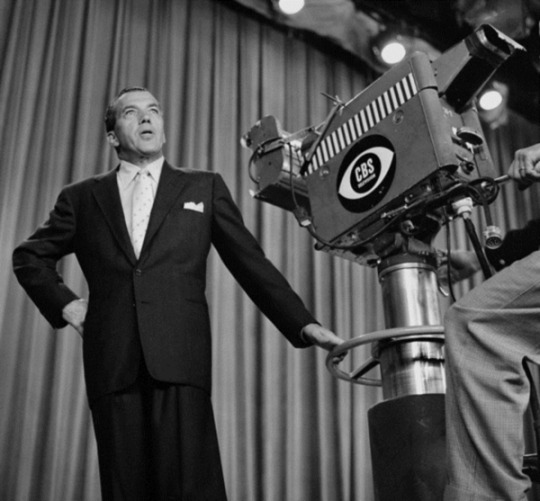
Ed Sullivan (Himself / Host) was a preeminent television variety show host who is best remembered for hosting his own show, at first titled “Toast of the Town” but later simply known as “The Ed Sullivan Show,” which became a staple of Sunday night viewing for millions of Americans from 1948 to 1971. As such, his name was often mentioned on “I Love Lucy” and Lucille Ball's subsequent sitcoms. He introduced America to such entertainers as Elvis Presley, The Beatles, and The Supremes. Sullivan entered icon status when he and his television show were worked into the plot of the Broadway musical Bye Bye Birdie in 1960. The musical includes the song "Hymn for a Sunday Evening" which has a chorus that repeats Sullivan's name in a choir-like harmony. Hope made an appearance in the 1964 film version. The theatre on Broadway in New York City where Sullivan did his weekly show was named after him in 1967. He died in 1974.
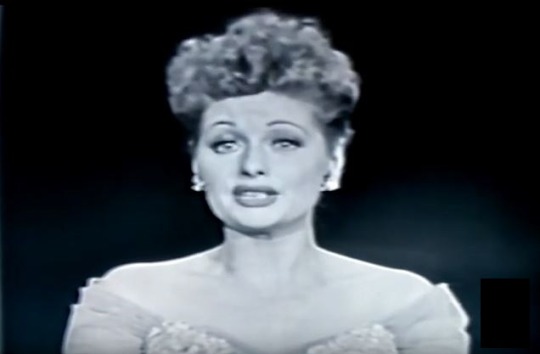
Lucille Ball (Herself / Lucy Ricardo) was born on August 6, 1911 in Jamestown, New York. She began her screen career in 1933 and was known in Hollywood as ‘Queen of the B’s’ due to her many appearances in ‘B’ movies. With Richard Denning, she starred in a radio program titled “My Favorite Husband” which eventually led to the creation of “I Love Lucy,” a television situation comedy in which she co-starred with her real-life husband, Latin bandleader Desi Arnaz. The program was phenomenally successful, allowing the couple to purchase what was once RKO Studios, re-naming it Desilu. When the show ended in 1960 (in an hour-long format known as “The Lucy-Desi Comedy Hour”) so did Lucy and Desi’s marriage. In 1962, hoping to keep Desilu financially solvent, Lucy returned to the sitcom format with “The Lucy Show,” which lasted six seasons. She followed that with a similar sitcom “Here’s Lucy” co-starring with her real-life children, Lucie and Desi Jr., as well as Gale Gordon, who had joined the cast of “The Lucy Show” during season two. Before her death in 1989, Lucy made one more attempt at a sitcom with “Life With Lucy,” also with Gordon, which was not a success and was canceled after just 13 episodes.
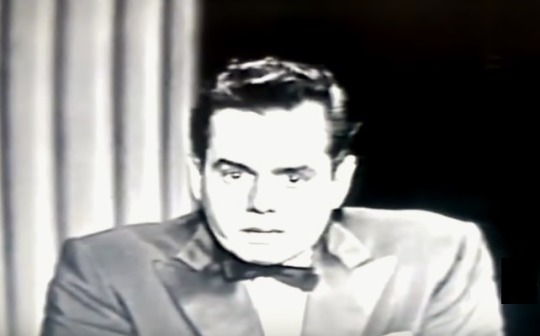
Desi Arnaz (Himself / Ricky Ricardo) was born in Cuba in 1917 and immigrated to America as a youngster. He was a musician who married Lucille Ball in 1940 after meeting her on the set of 1939’s Too Many Girls, which he had done on stage in New York. In order to keep him ‘off the road’ Ball convinced producers to cast him as her husband in a new television project based on her radio show “My Favorite Husband.” The network was convinced. In 1951, Arnaz and Ball began playing Lucy and Ricky Ricardo, roles they would be identified with for the rest of their lives. The couple had two children together, Lucie and Desi Jr. In 1960, Ball and Arnaz divorced. Desi became a producer, responsible for such hits as “The Mothers-in-Law” (1967-69). He re-married in 1963. Desi Aranz died in 1986, just a few years before Ball.
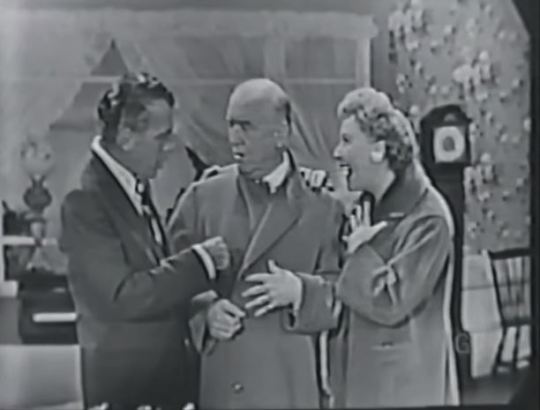
William Frawley (Himself / Fred Mertz) was already a Hollywood veteran when he was hired by Desi Arnaz to play Fred Mertz on “I Love Lucy.” After the series concluded he joined the cast of “My Three Sons” playing Bub Casey. He did an episode of “The Lucy Show” in October 1965 which was his final TV appearance before his death in March 1966.
Vivian Vance (Herself / Ethel Mertz) was born Vivian Roberta Jones in Cherryvale, Kansas in 1909, although her family quickly moved to Albuquerque, New Mexico where she was raised. She had extensive theatre experience, co-starring on Broadway with Ethel Merman in “Anything Goes.” She was acting in a play in Southern California when she was spotted by Desi Arnaz and hired to play Ethel Mertz, Lucy Ricardo’s neighbor and best friend. The pairing is credited with much of the success of “I Love Lucy.” Vance was convinced to join the cast of “The Lucy Show” in 1962, but stayed with the series only through season three, making occasional guest appearances afterwards. She made a total of six appearance on “Here’s Lucy.” She also joined Lucy for a TV special “Lucy Calls the President” in 1977. Vance died two years later.
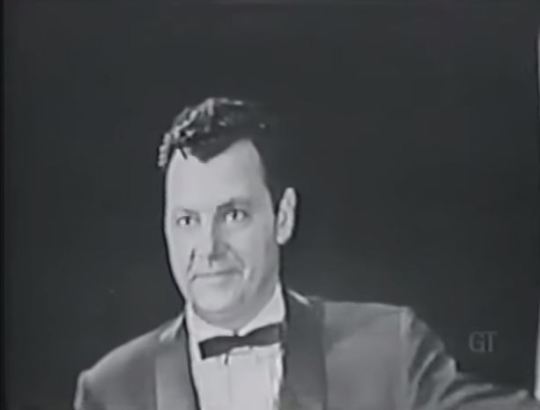
Harry Chesney (Himself) was the vice-president of Philip Morris, the tobacco company that first sponsored “I Love Lucy” in 1951.

Howard Dietz (Himself) was a lyricist who wrote over 500 songs in his lifetime. In 1954 he was a vice-president at MGM where he is credited with developing the Leo the lion logo as well as their slogan “Ars Gratia Artis” (art for art's sake). The Long, Long Trailer was an MGM picture.

Don Dixon (Himself) was a correspondent for INS, the International News Service. He was held captive in Communist China for 18 months.

John Hodiak (Himself) was a busy actor at MGM who had co-starred with Lucille Ball in their 1946 film Two Smart People. He was also seen in the 1944 film Lifeboat with Tallulah Bankhead.
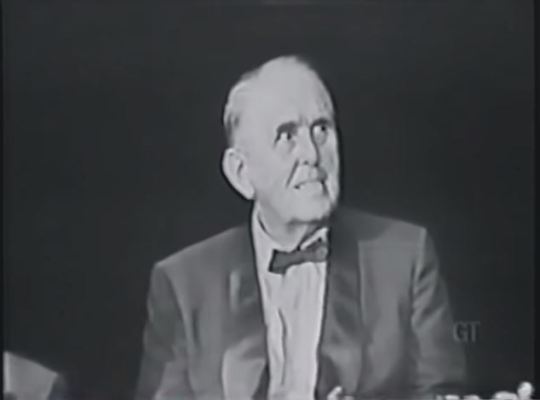
Tex O'Rourke (Himself) was a toastmaster famous for moderating his “Circus Saints and Sinners” tributes.
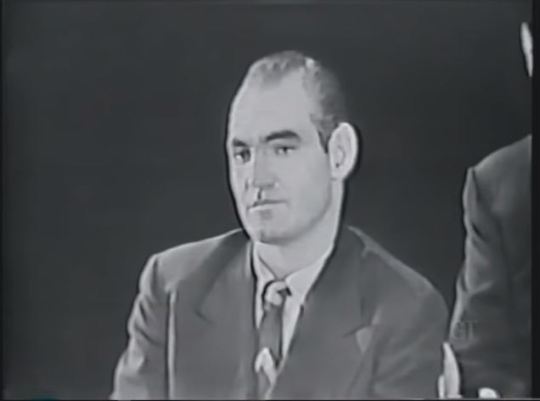
Dusty Rhodes (Himself) was a member of 1954 World Series Champion team the New York Giants. He would return to “The Ed Sullivan Show” in April 1955.
Robert Taylor (Archival Footage from Bataan) acted alongside Desi Arnaz in the 1943 film Bataan. He never appeared on “I Love Lucy,” but during the Ricardo's stay in Hollywood, Lucy Ricardo mentioned meeting him at a farmers market and getting his autograph on an orange.
Keenan Wynn (Archival Footage from The Long, Long Trailer)
Marjorie Main (Archival Footage from The Long, Long Trailer)
Johnny Roventini (Philip Morris Bellhop, uncredited)
Julia Meade (Voice of Mercury Commercial)
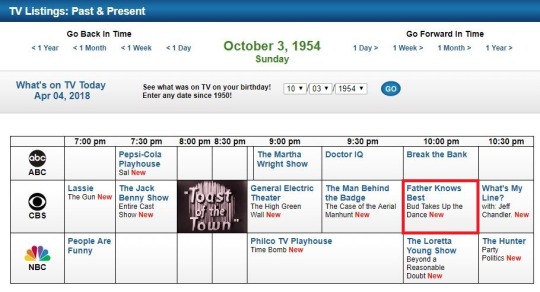
This show was aired on CBS on October 3, 1954. Sunday nights were known as “Ed Sullivan Show” nights in the same way that Lucy and Desi “owned” Monday nights throughout the 1950s. This show was done live in front of a studio audience at (what is now known as) the Ed Sullivan Theatre in New York City.
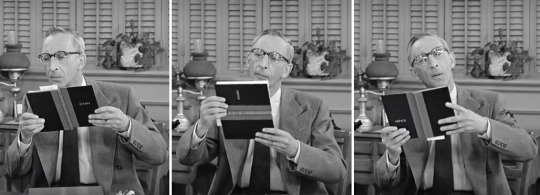
The next day “I Love Lucy” began its fourth season on the air with “The Business Manager” (ILL S4;E1) co-starring Charles Lane (above) as Mr. Hickox. Two weeks later the series celebrated its 100th show.
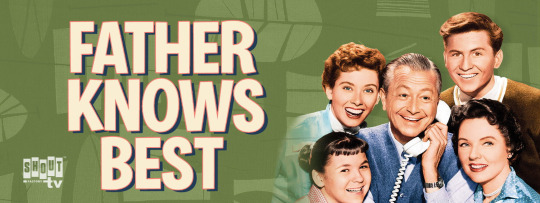
The same night this show aired, “Father Knows Best” made its TV debut on CBS at 10pm. Prior to that the series had been aired on radio since 1949. On TV, it ran for one season and was canceled. The series was picked up by NBC, where it remained for three seasons. After a second cancellation in 1958, the series was picked up yet again, by CBS, where it aired until May 1960.
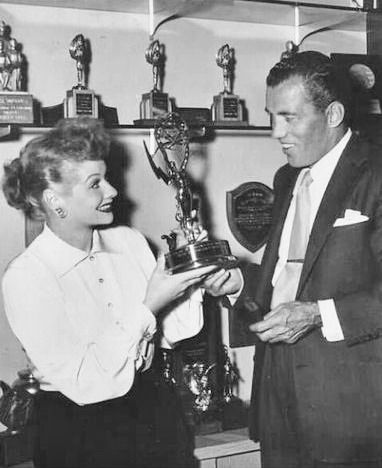
This was the second of Lucille Ball's dozen appearances on “The Ed Sullivan Show.” Ball and Arnaz had been on earlier in the year, after Ed Sullivan presented “I Love Lucy” with an Emmy Award in April 1954. Desi made eight appearances, the last being in 1960. This is the only time the full hour of Sullivan's show is devoted solely to Lucy and Desi.
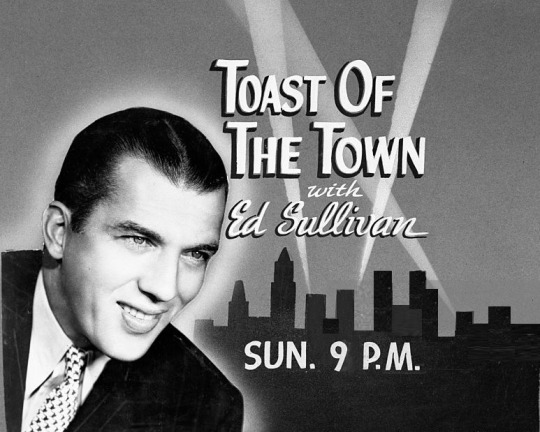
“Toast of the Town” was not filmed in Hollywood, like “I Love Lucy.” It was broadcast live from New York and then kinescoped to the West Coast. Consequently, prints of this show are generally of poor quality.
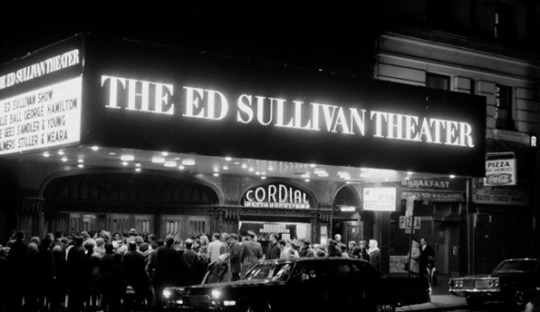
During the run of “I Love Lucy,” Ed Sullivan and his show were mentioned several times:
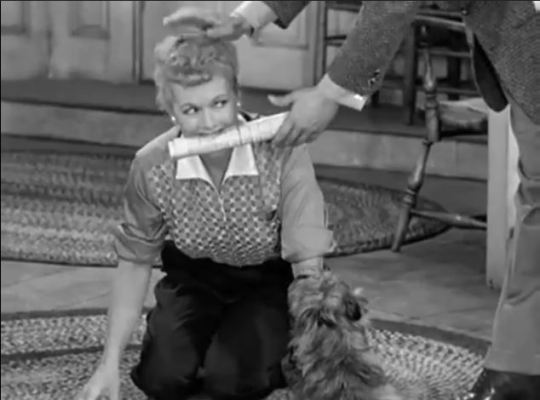
Lucy: (about Fred the dog) “He learned obedience, but he’s not ready for ‘The Ed Sullivan Show’.”
~ “The Ricardos Dedicate a Statue” (ILL S6;E27)
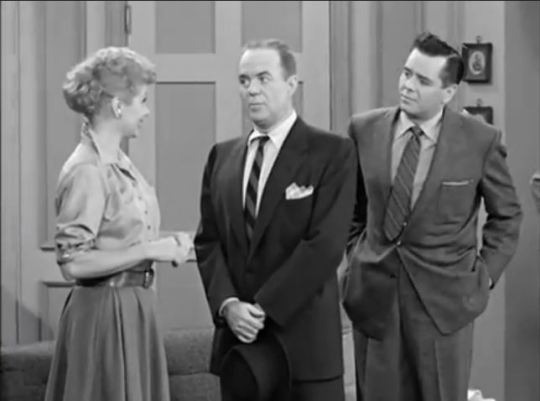
Johnny Clark: (to Ricky) “I think I've got you planted on ‘The Ed Sullivan Show’ for next month.”
[Celebrities would often be asked to stand-up and wave if they were spotted on “The Ed Sullivan Show.”] ~ “Face to Face” aka “The Ricardos Are Interviewed” (ILL S5;E7)

Lucy: (to a stoic Buckingham Palace Guard) “Wow, you make Ed Sullivan look like laughing boy.”
[Sullivan was known not to smile or laugh, something Lucy chides him for in the tribute.] ~ “Lucy Meets the Queen” (ILL S5;E15)
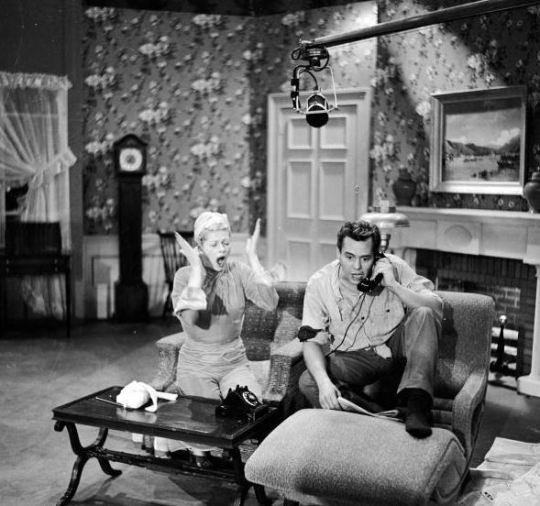
To kick off the hour, Lucy and Desi perform a sketch about their meeting with Ed Sullivan. Although the sketch feels like an episode of “I Love Lucy,” Lucy and Desi use their own names. It opens with Lucy knitting and Desi at home (in Beverly Hills), relaxing and reading the Sunday papers, which are spread out all over the room. Desi is looking for the “spor' session” [“sports section”].
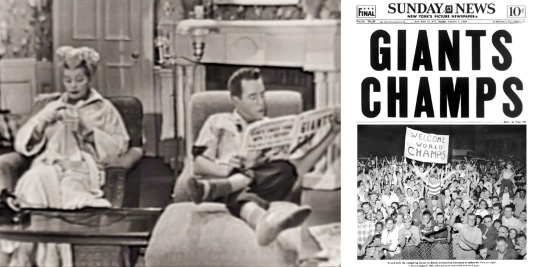
The newspaper Desi holds is the Sunday, October 3, 1954, edition of the New York Daily news, with the back page headline “GIANTS CHAMPS”! The previous day, the New York Giants triumphed over the Cleveland Indians in the 1954 World Series. Interestingly, this was not good news to Lucy's good friend Bob Hope, who was part-owner of the Indians.

Two years later, October 8, 1956, Lucy and Desi guest-starred on “The Bob Hope Chevy Show” which for the evening was broadcast in Ed Sullivan's time slot, a fact Hope acknowledged in his monologue. Like this Ed Sullivan show, it was the day after a world series victory and the MVP was invited to appear on the show. For this “Toast of the Town” that player was Dusty Rhodes of the New York Giants. In 1956 it would be Don Larsen of the New York Yankees.

When Lucy shows off what she's been knitting, Desi immediately jumps to conclusions: “Lucy! Again? We've already done that bit!” Desi is referring to Lucy Ricardo having a baby on “I Love Lucy.” Prior to that, in 1951's “Drafted” (ILL S1;E11, above), Ricky and Fred mistake the girls knitting them sweaters for a clue that they are expecting.
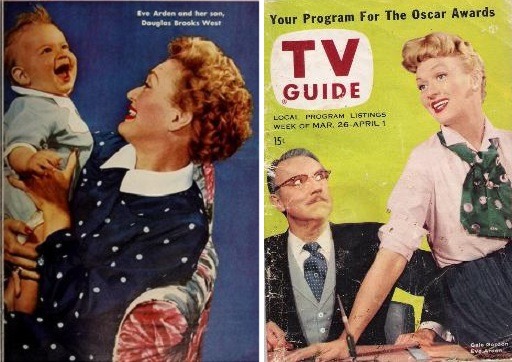
Lucy tells him to relax, that she's knitting it for Eve Arden's new baby. Arden, a friend of Ball's from her B-movie days, was currently starring in TV's “Our Miss Brooks” filmed at Desilu. On September 17, 1954, she gave birth to what would be her only biological child, Douglas Brooks West.
After arguing who should answer the telephone, Desi answers it, but can't quite figure out who it is on the other end.
Desi (to Lucy, covering the phone receiver): “I think it's somebody from a bakery. A guy called Solomon. Ed Solomon. He says he's selling toast in this part of the town.”
Lucy grabs the phone and it turns out to be Ed Sullivan who is coming right over, despite the fact that their house is a mess and they aren't properly dressed. Desi says they should let Ed see them as they really are, with no pretense.
Lucy: “The show is called 'Toast of the Town', not 'Crumbs of the Town'.”
She then implores Desi to put on his shoes, to which he replies, “What for? He knows I got feet.”
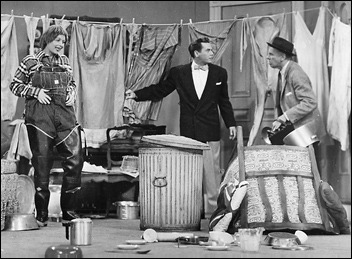
This is very similar to an exchange in “Men Are Messy” (ILL S1;E8) from 1951.
Lucy Ricardo: “Put your shoes on and pick up those papers. Company is coming.” Ricky Ricardo: “It isn't company, it's Fred and Ethel.” Lucy Ricardo: “Well, put your shoes on.” Ricky Ricardo: “They know I have feet.”
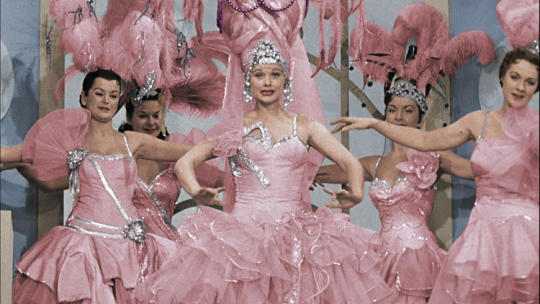
In the next scene, they are dressed to the nines, and Lucille makes her entrance to the strains of “A Pretty Girl Is Like A Melody” by Irving Berlin. In 1955's , “Lucy Gets Into Pictures” (ILL S4;E18) Lucy Ricardo gets a role as a showgirl, strutting down a staircase wearing a giant head-dress, while this song is playing.

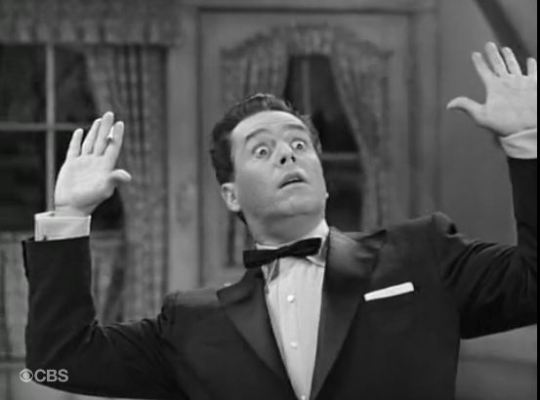
Before Sullivan arrives, Lucy and Desi silently practice being acknowledged from the audience, just in case that is what Sullivan has in mind. This is visually similar to when Lucy and Ricky rehearse being surprised with a “Housewarming” (ILL S6;E23) party when they first move to Connecticut in 1957.
The phone rings again and Lucy talks to their agent Don Sharpe about the purpose of Sullivan's visit, while Desi hovers anxiously behind her:
Lucille (into the phone): “He is! He isn't? He isn't? He is! He isn't!” (she hangs up) Desi: “Well, is he or isn't he?”
This is another gag taken directly from “I Love Lucy.” It is possible that the “I Love Lucy” writers participated in the scripting of this sketch.
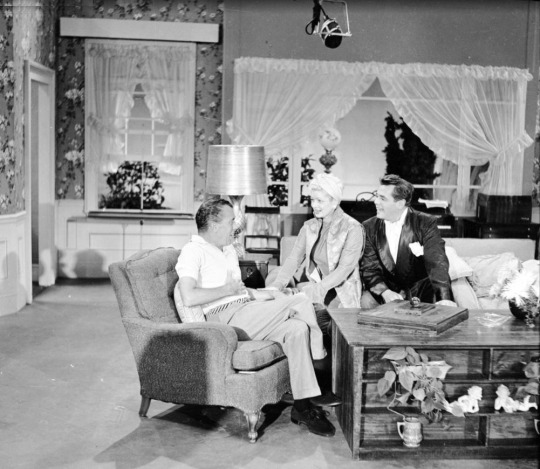
When Sullivan finally arrives at the Arnaz home, they rush him off his feet and pretend not to have already heard the news. Sullivan finally spills the beans.
Lucy: “'Toast of the Town' and the whole slice about us!”

When Sullivan asks Lucille for a cigarette, the Philip Morris bellhop Johnny Roventini literally pops out of the coffee table and gives him one! Although Philip Morris was not a sponsor of “Toast of the Town,” the gag acknowledges the company's initial support of “I Love Lucy.”
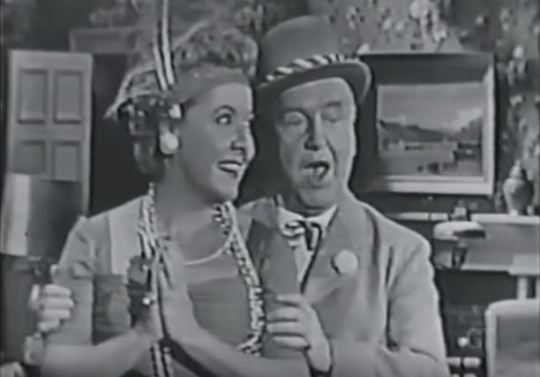
Vivian Vance just happens to drop by – and then almost immediately Bill Frawley. The just happen to be ready to regale Sullivan with a song, “Hullaballoo,” which Frawley says is an old vaudeville tune from 1913. He also claims that they previously performed it “on one of the old Lucy shows” but no such song was ever sung by Fred and Ethel on “I Love Lucy.”
A curtain then closes for their bows. Sullivan reminds Vivian that they last met when he presented the Emmy Award to “I Love Lucy” in Hollywood. He recalls first meeting Frawley in Leone's Restaurant. Jimmy Walker introduced him to Sullivan. Walker was mayor of New York City from 1926 to 1932, when Sullivan was a news correspondent.

Sullivan discusses the film Bataan featuring Desi Arnaz and Robert Taylor. Baatan (1943) was an MGM film about the World War II Battle of Bataan, a region of the Philippines.
youtube
After a Mercury commercial narrated by Julia Meade, Ed Sullivan introduces the trailer from The Long, Long Trailer, a 1954 color film based on a novel of the same name by Clinton Twiss. It is about a couple who buy a new trailer home and spend a year traveling across the United States.The film stars Lucille Ball as Tacy Collini and Desi Arnaz as Nicky Collini. The characters' names were changed from the book to sound more like ‘Lucy and Ricky’ (Tacy and Nicky, say it fast).
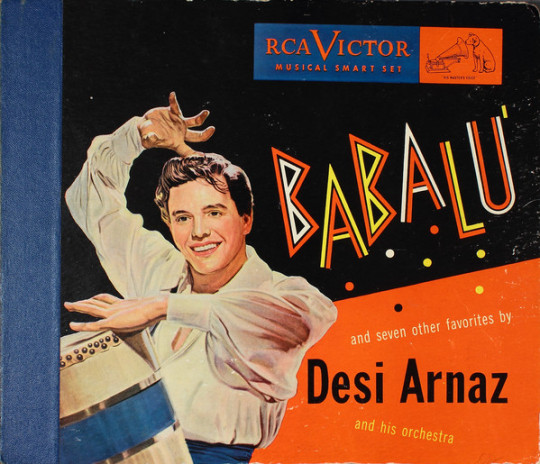
Desi Arnaz performs his signature song “Babalu.” He performed the song on “I Love Lucy” in "The Audition" (ILL S1;E6) and in "The Ricardos Visit Cuba" (ILL S6;E9), where Desi was joined by Richard Keith (Little Ricky). Other times it was partially heard or sung for comedic purposes, such as in "Lucy Hires an English Tutor" (ILL S2;E13), “Ricky's Life Story" (ILL S3;E1), "The Publicity Agent" (ILL S1;E31) and “The Young Fans" (ILL S1;E20). Desi Arnaz first recorded the song in 1947, although he had performed it as part of his nightclub act prior to that.
After Desi finishes singing, Sullivan tells his audience that Desi has had a fever of 101 all day, but insisted on singing “Babalu” anyway.
Finally, the "Circus Saints and Sinners Luncheon" begins, a formal tribute (the actual “Toast” of the town) with speeches from and about the Arnazes.
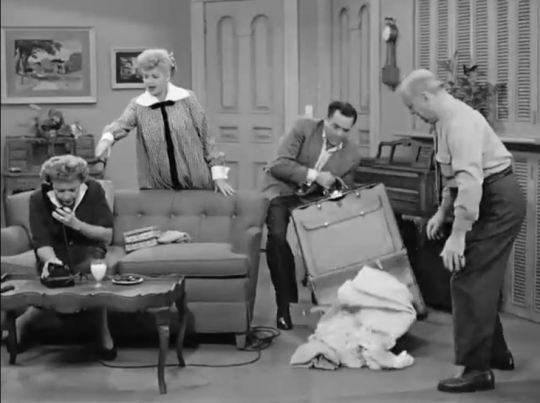
A clip from “Lucy Goes to the Hospital” (ILL S2;E16), which first aired on January 19, 1953. This was Desi Arnaz’s favorite episode.This is the episode that made “I Love Lucy” a national phenomenon. It is estimated that 72% of the American public who owned a television tuned in to see the birth of Little Ricky. His birth was timed to coincide with Desi Jr.'s birth, that same day. This episode aired the day before the inauguration of President Eisenhower and five months before the coronation of Queen Elizabeth II. More people watched this “I Love Lucy” episode than either one of those televised historic events.
To kick things off, Ed Sullivan reads a letter from Bernard Baruch (1870-1965). Baruch was a financier and powerful political consultant who had served with Sullivan on a Government-appointed Entertainment Committee to bolster post-war morale in America.
Toastmaster Tex O’Rourke discusses Ball and Arnaz’s childhoods and their early work in show-business.
Baseball player Dusty Rhodes some brief comments of his own.
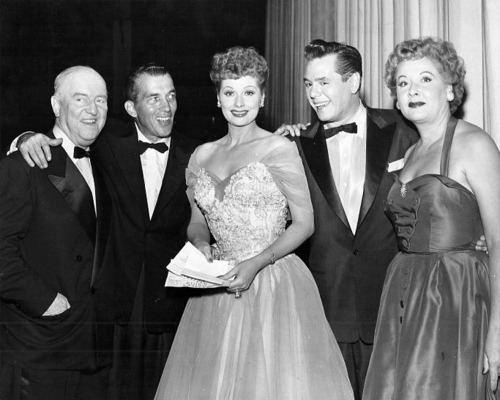
Lucille Ball is first to make her remarks, thanking the networks and production staff of “I Love Lucy,” and ultimately Desi:
Lucy: “This guy, who seems to be in all places at once, making like an actor, a banker, a politician – in short, a producer – gets my vote as the greatest producer of all time. And I have two little Arnazes at home to prove it.”
Desi Arnaz expresses his appreciation to Lucy and the United States of America for giving him the opportunities he has enjoyed.
Desi: “We came to this country and we didn't have a cent in our pockets. From cleaning canary cages to this night in New York is a long ways. And I don’t think there’s any other country in the world that could give you that opportunity.”
Both Lucy and Desi become visibly emotional while making their speeches. "Desi was very sincere about that," said Madelyn Davis, who along with her partner, Bob Carroll Jr., wrote every episode of the first four seasons of “I Love Lucy” with Jess Oppenheimer. "Lucy got teary and even Ed Sullivan. Desi wasn't kidding. They had nothing."
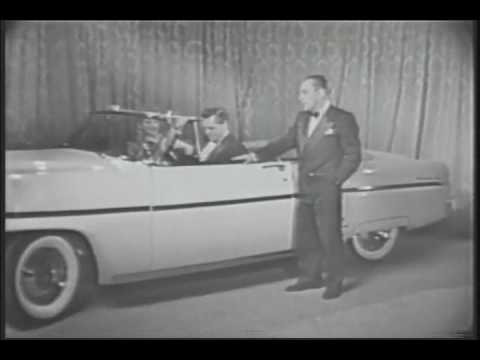
The show includes Lincoln Mercury commercials starring Ed Sullivan. Lucy and Desi had participated in such commercials in their first appearance on “Toast of the Town” in April 1954. During the sketch that starts the show, Lucy says the words “High dramatic” and Ed reminds her that on his show, it is “Merc-O-Matic,” which was Lincoln Mercury's own automatic transmission, introduced in 1951.
This Date in Lucy History – October 3rd
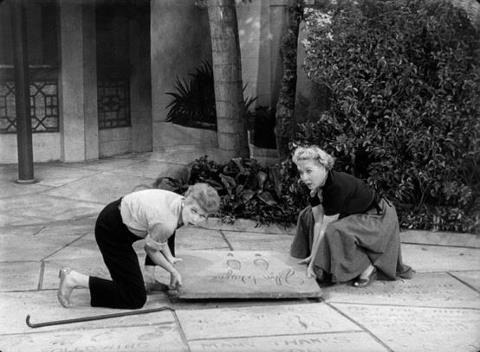
"Lucy Visits Grauman's" (ILL S5;E1) – October 3, 1955
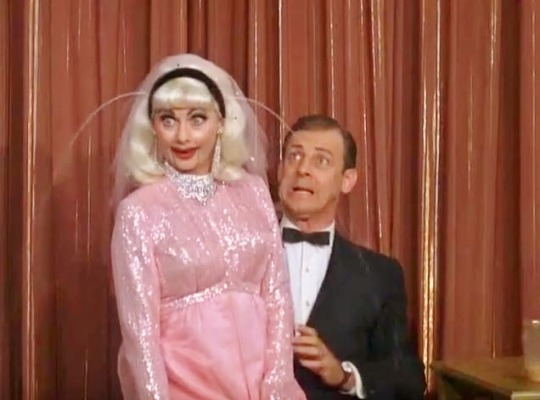
"Lucy and Paul Winchell" (TLS S5;E4) – October 3, 1966
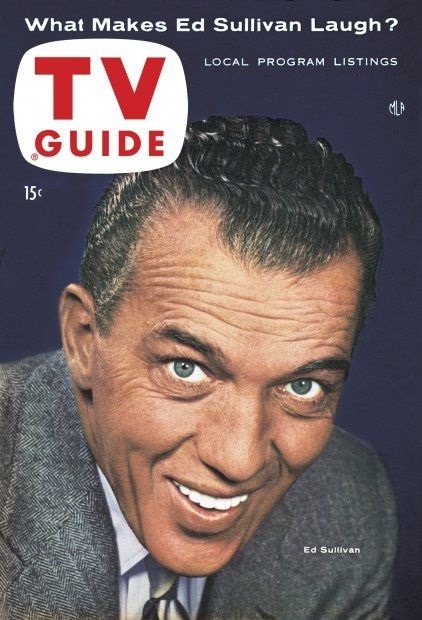
#Toast of the Town#The Ed Sullivan Show#Ed Sullivan#Lucille Ball#Desi Arnaz#I Love Lucy#Vivian Vance#William Frawley#1954#CBS#John Wray#Harry Chesney#Johnny Roventini#Howard Dietz#Don Dixon#John Hodiak#Tex O'Rourke#Circus Saints and Sinners#Dusty Rhodes#New York Giants#Robert Taylor#Bataan#Keenan Wynn#Julia Meade#Marjorie Main#The Long Long Trailer#MGM#Eve Arden#Don Sharpe#Hullabaloo
2 notes
·
View notes
Text
"Ambitions" By One Ok Rock (Album Review)
Note: I listened to the English version of all of these songs (I don’t know any Japanese). This review has been long awaited, I’ve had a portion of it done for the past month or so. I finally sat down and told myself I was going to finish it, so here it is.
Last summer, I went to a concert where One Ok Rock, a Japanese rock band formed in 2005, was one of the opening bands. At that point, I didn’t take a huge notice to the lyrics of their music or the songs in general but I was captivated by their stage performance. The band radiated energy as they jumped around the stage and got the crowd pumped for the headlining artist.
One Ok Rock’s eighth album, “Ambitions,” blew me away. This was the first time I sat down and listened to the four piece band since I heard about them last July. I tried focusing on their recent album, although this album left me wanting to hear the bands’ previously produced work.
Track 1: Ambitions
Along with “Ambitions” being the introduction track of the album (and the name of the album), it also radiates a feeling of wonder. To me, the writer is trying to understand their thoughts. This presents a burning curiosity for the upcoming tracks. The nearly minute and a half song intensifies and then gracefully comes to a close at the very end. I was disappointed there weren’t lyrics to this track.
Track 2: Bombs Away
The second track on the album, “Bombs Away,” had my interest piped from the first cords. At first the noise is very subtle but quickly makes its presence known.
As I was listening to the beginning instrumental portion, I imagined a group of people wandering an unknown place. This group of people had no idea what was to come or what could be hidden within the walls.
As the lyrics come pouring in, the singer’s voice is powerful and he clearly knows what he is trying to get across. The lyrics “Save yourself for a better day / No, no, we are falling down” speak to me in a way I feel everyone could understand. Thoughts change and are easily influenced. Some days we feel unstoppable and others we feel lost and hopeless.
This track hit a home run in my book. I loved what the band was trying to say in this powerful song and I loved it musically and lyrically.
Track 3: Taking Off
The next track on the album, “Taking Off” immediately had me bobbing my head in tune to the beat and when lead singer, Takahiro Moriuchi (also known as his stage name, Taka) began singing I was captivated. This anthem was lyrically great with lines such as “Thought we had it right / Now it’s an endless night” and “We’re taking off together / Even though we always crash and burn.”
The scenario this song painted in my mind was surrounded by relationships - the toxic ones, the forbidden ones and the dangerous ones - were all apart of that image.
Track 4: We Are
The fourth track of the album, “We Are” is once again another lyrically powerful song. However, compared to the first two songs this one is a downtempo ballad that still manages to keep its rock vibe beautifully.
“We Are” is one of those tracks you’d listen to when you feel weak or unimportant to the world. In times where you mess up or things get difficult, this song is there to remind you that you are “The colors in the dark.”
Track 5: Jaded (ft. Alex Gaskarth)
Before I first listened to the song, I was already looking forward to hearing All Time Low’s Alex Gaskarth and his role in the track. However, “Jaded” did not meet my expectations.
The first few seconds of the track had me thinking I was going to be introduced into a completely different world than the previous tracks on the album let on. Once the song hit the 15 second mark, my interest was piped. I loved the chorus, and how the multiple voices towards the end of the song enhanced the lines “Jaded, what are you thinking / Fading all the time.”
Unfortunately, it was difficult to distinguish Gaskarth’s voice and I’m not sure having such a similar voice sing along with One Ok Rock added anything to the song. Personally, I think the song could have benefited more if someone with a more distinct voice in comparison with the band had been involved.
Track 5: Hard To Love
The fifth track, “Hard To Love” is a slowed down ballad and gives the listener a feeling of peace and tranquility. The song is a thank you to a parent for helping the writer get through the rough times even though the writer was “hard to love."
I love the reference to a "diamond in the rough” which to me, represents a teenager making mistakes and trying to find their way in the world.
The song paints a vivid picture in my mind from the scenery to the actions of the people around. I can imagine the newly green covered trees and the warm but slightly chilly air created when the wind blows. A family is comfortably resting around a fire pit, although the pit doesn’t contain any fire. A now grown man is singing this song to his parents who are wearing proud and grateful smiles on their faces as they all reflect on his childhood and how much the son has grown and accomplished.
Any listener can tell this track is very personal to the writer. I love how a piece of the writer’s childhood was exposed in such a vulnerable way.
Track 6: Bedroom Warfare
After the previously heartfelt ballad, the album heats up immediately with “Bedroom Warfare,” a fiery track that takes the saying “keep your friends close but keep your enemies closer” to a whole different level.
The lyrical aspect is intriguing, and almost romantic. They’re enemies, sure. But I think underneath, the characters portrayed in the song have chemistry they keep wanting to deny. So called enemies by day but lovers by night.
This is by far one of my favorite tracks on this album. The story within the song is exciting and dangerous which makes everything more interesting.
Track 7: American Girls
“American Girls” is a straight up summer anthem. I wanted to get up and start dancing around my room as soon as it came on.
The nearly three minute song had me fascinated from the beginning. With the first line, “I’m coming straight out of Tokyo,” I was left with the impression that the inner bad boy of the lead singer was about to come out.
The whole second verse left me shocked but 100% in a great way. The inner bad boy was definitely coming out but I’m not complaining. With the lines “It’s like I’m in a movie, said "Do you wanna use me?” / And she said “Hell yes” surprised me.
The song wrapped up perfectly and I was content after that. No complaints for this one.
Track 8: I Was King
At first track nine, “I Was King” had a harder time catching my attention than the rest of the songs on the album.
The song has a 15 second introduction before the lyrics start flowing but for a reason I’m unaware of, it felt like a longer span of time than in reality.
The farther into the song I get, the more I become accustomed and the more it grows on me. However, compared to the others this is most likely a song I’d skip when listening to the album in the future.
Track 9: Listen
“Listen” is a song the band wrote for, what I’m assuming, is their fans who are suffering from depression, mental illness or just having a hard time in life.
The lyrics “All these years, the days go by / I’ve seen you fall a million times / Everybody makes mistakes” are important because we all struggle. It’s human nature to struggle and this song is about hanging on through those tough times. Sometimes you just have to “listen” to those people around you who are there for you and don’t want to lose you.
Track 10: One Way Ticket
“One Way Ticket” is a personal song different than the rest of the tracks. Emotion is clearly present in the singer’s voice. Some parts of the song remind me of something similar to pop band, One Direction.
The image I receive when listening to this song is surrounded by a long-distance relationship. The singer wants a “one way ticket” to see his other half because when they’re apart, he feels all alone.
I love how the writer says “You are my address” and a couple lines later says “I need a one way ticket / Home.” I admire the analogy used between his address, home and the person the song is about.
Track 12: Bon Voyage
Track twelve of One Ok Rock’s “Ambitions” is “Bon Voyage” which bounces back from the two previous songs. The audience is once again emerged into the punk-rock world.
At first we’re met with the sounds of video game lasers but soon the song breaks out and we’re bobbing our heads to the beat.
This track is musically appreciable but the lyrics are only somewhat catchy. For me, the song wasn’t as great as some of the others.
Track 13: Start Again
“Start Again” is a track about being yourself and not apologizing for it. Musically, the song is terrific but the lyrics are what get me. They have an important message that frankly, the world should hear.
Lyrics such as “If you don’t think I’m worth it / Find someone else / I won’t say I’m sorry / For being who I am” are words I think people should live by. To many people these days are too afraid to be themselves.
Track 14: Take What You Want (ft. 5 Seconds of Summer)
The final song off this album is “Take What You Want” (feat 5 Seconds of Summer). This was actually the first song I heard more than once by the band. This was originally the song that made me want to dive deeper into the band’s musical work.
I’ve loved this song since it first came out. I remember listening to it the first time and freaking out over Ashton Irwin, from 5 Seconds of Summer and his solo in the song. (Woah, I sound like such a fangirl!)
I honestly have nothing but good opinions on the song and I don’t think it could have been any better.
Overall, I think this album is outstanding and one of the best I’ve heard yet. My top three favorite tracks are Bedroom Warfare, American Girls and Take What You Want.

#one ok rock#album review#ambitions#english version#rock#bombs away#taking off#we are#jaded ft alex gaskarth#hard to love#bedroom warfare#american girls#i was king#listen#one way ticket#bon voyage#start again#take what you want#take what you want ft 5 seconds of summer#opinion
2 notes
·
View notes
Text
The One-Hour Guide to SEO: Keyword Targeting & On-Page Optimization – Whiteboard Friday
Posted by randfish
We’ve covered strategy, keyword research, and how to satisfy searcher intent — now it’s time to tackle optimizing the webpage itself! In the fourth part of the One-Hour Guide to SEO, Rand offers up an on-page SEO checklist to start you off on your way towards perfectly optimized and keyword-targeted pages.
If you missed them, check out the other episodes in the series so far:
The One-Hour Guide to SEO, Part 1: SEO Strategy
The One-Hour Guide to SEO, Part 2: Keyword Research
The One-Hour Guide to SEO, Part 3: Searcher Satisfaction
Click on the whiteboard image above to open a high resolution version in a new tab!
Video Transcription
Howdy, Moz fans. Welcome to another edition of our special One-Hour Guide to SEO. We are now on Part IV – Keyword Targeting and On-Page Optimization. So hopefully, you’ve watched Part III, where we talked about searcher satisfaction, how to make sure searchers are happy with the page content that you create and the user experience that you build for them, as well as Part II, where we talked about keyword research and how to make sure that you are targeting the right words and phrases that searchers are actually looking for, that you think you can actually rank for, and that actually get real organic click-through rate, because Google’s zero-click searches are rising.

Now we’re into on-page SEO. So this is essentially taking the words and phrases that we know we want to rank for with the content that we know will help searchers accomplish their task. Now how do we make sure that the page is optimal for ranking in Google?
On-page SEO has evolved
Well, this is very different from the way it was years ago. A long time ago, and unfortunately many people still believe this to be true about SEO, it was: How do I stuff my keywords into all the right tags and places on the page? How do I take advantage of things like the meta keywords tag, which hasn’t been used in a decade, maybe two? How do I take advantage of putting all the words and phrases stuffed into my title, my URL, my description, my headline, my H2 through H7 tags, all these kinds of things?
Most of that does not matter, but some of it still does. Some of it is still important, and we need to run through what those are so that you give yourself the best possible chance for ranking.
The on-page SEO checklist
So what I’ve done here is created a sort of brief, on-page SEO checklist. This is not comprehensive, especially on the technical portion, because we’re saving that for Part V, the technical SEO section, which we will get into, of this Guide. In this checklist, some of the most important things are on here.

Descriptive, compelling, keyword-rich title element
Many of the most important things are on here, and those include things like a descriptive, compelling, keyword-rich but not stuffed title element, also called the page title or a title tag. So, for example, if I am a tool website, like toolsource.com — I made that domain name up, I assume it’s registered to somebody — and I want to rank for the “best online survey tools,” well, “The Best Online Survey Tools for 2019” is a great title tag, and it’s very different from best online survey tools, best online survey software, best online survey software 2019. You’ve seen title tags like that. You’ve seen pages that contain stuff like that. That is no longer good SEO practices.
So we want that descriptive, compelling, makes me want to click. Remember that this title is also going to show up in the search results as the title of the snippet that your website appears in.

Meta description designed to draw the click
Second, a meta description. This is still used by search engines, not for rankings though. Sort of think of it like ad text. You are drawing a click, or you’re attempting to draw the click. So what you want to do is have a description that tells people what’s on the page and inspires them, incites them, makes them want to click on your result instead of somebody else’s. That’s your chance to say, “Here’s why we’re valuable and useful.”

Easy-to-read, sensible, short URL
An easy-to-read, sensible, short URL. For example, toolsource.com/reviews/best-online-surveys-2019. Perfect, very legible, very readable. I see that in the results, I think, “Okay, I know what that page is going to be.” I see that copied and pasted somewhere on the web, I think, “I know what’s going to be at that URL. That looks relevant to me.”
Or reviews.best-online-tools.info. Okay, well, first off, that’s a freaking terrible domain name. /oldseqs?ide=17 bunch of weird letters and tab detail equals this, and UTM parameter equals that. I don’t know what this is. I don’t know what all this means. By the way, having more than one or two URL parameters is very poorly correlated with and not recommended for trying to rank in search results. So you want to try and rewrite these to be more friendly, shorter, more sensible, and readable by a human being. That will help Google as well.

First paragraph optimized for appearing in featured snippets
That first paragraph, the first paragraph of the content or the first few words of the page should be optimized for appearing in what Google calls featured snippets. Now, featured snippets is when I perform a search, for many queries, I don’t just see a list of pages. Sometimes I’ll see this box, often with an image and a bunch of descriptive text that’s drawn from the page, often from the first paragraph or two. So if you want to get that featured snippet, you have to be able to rank on page one, and you need to be optimized to answer the query right in your first paragraph. But this is an opportunity for you to be ranking in position three or four or five, but still have the featured snippet answer above all the other results. Awesome when you can do this in SEO, very, very powerful thing. Featured snippet optimization, there’s a bunch of resources on Moz’s website that we can point you to there too.
Featured Snippets: From Start to Finish
How to Discover Featured Snippet Opportunities – Whiteboard Friday
How to Target Featured Snippet Opportunities – Whiteboard Friday

Use the keyword target intelligently in…

The headline
So if I’m trying to rank for “best online survey tools,” I would try and use that in my headline. Generally speaking, I like to have the headline and the title of the piece nearly the same or exactly the same so that when someone clicks on that title, they get the same headline on the page and they don’t get this cognitive dissonance between the two.

The first paragraph
The first paragraph, we talked about.

The page content
The page’s content, you don’t want to have a page that’s talking about best online survey tools and you never mention online surveys. That would be a little weird.

Internal link anchors
An internal link anchor. So if other places on your website talk about online survey tools, you should be linking to this page. This is helpful for Google finding it, helpful for visitors finding it, and helpful to say this is the page that is about this on our website.

��
I do strongly recommend taking the following advice, which is we are no longer in a world where it makes sense to target one keyword per page. For example, best online survey tools, best online survey software, and best online survey tools 2019 are technically three unique keyword phrases. They have different search volumes. Slightly different results will show up for each of them. But it is no longer the case, whereas it was maybe a decade ago, that I would go create a page for each one of those separate things.
Instead, because these all share the same searcher intent, I want to go with one page, just a single URL that targets all the keywords that share the exact same searcher intent. If searchers are looking to find exactly the same thing but with slightly modified or slight variations in how they phrase things, you should have a page that serves all of those keywords with that same searcher intent rather than multiple pages that try to break those up, for a bunch of reasons. One, it’s really hard to get links to all those different pages. Getting links just period is very challenging, and you need them to rank.
Second off, the difference between those is going to be very, very subtle, and it will be awkward and seem to Google very awkward that you have these slight variations with almost the same thing. It might even look to them like duplicate or very similar or low-quality content, which can get you down-ranked. So stick to one page per set of shared intent keywords.

Leverage appropriate rich snippet options
Next, you want to leverage appropriate rich snippet options. So, for example, if you are in the recipes space, you can use a schema markup for recipes to show Google that you’ve got a picture of the recipe and a cooking time and all these different details. Google offers this in a wide variety of places. When you’re doing reviews, they offer you the star ratings. Schema.org has a full list of these, and Google’s rich snippets markup page offers a bunch more. So we’ll point you to both of those as well.

Images on the page employ…
Last, but certainly not least, because image search is such a huge portion of where Google’s search traffic comes from and goes to, it is very wise to optimize the images on the page. Image search traffic can now send significant traffic to you, and optimizing for images can sometimes mean that other people will find your images through Google images and then take them, put them on their own website and link back to you, which solves a huge problem. Getting links is very hard. Images is a great way to do it.

Descriptive, keyword-rich filenames
The images on your page should employ descriptive, keyword-rich filenames, meaning if I have one for typeform, I don’t want it to be pick one, two or three. I want it to be typeformlogo or typeformsurveysoftware as the name of the file.

Descriptive alt attributes
The alt attribute or alt tag is part of how you describe that for screen readers and other accessibility-focused devices, and Google also uses that text too.

Caption text (if appropriate)
Caption text, if that’s appropriate, if you have like a photograph and a caption describing it, you want to be descriptive of what’s actually in the picture.

Stored in same domain and subdomain
These files, in order to perform well, they generally need to be hosted on the same domain and subdomain. If, for example, all your images are stored on an Amazon Web Services domain and you don’t bother rewriting or making sure that the domain looks like it’s on toolsource.com/photos or /images here, that can cause real ranking problems. Oftentimes you won’t perform at all in Google images because they don’t associate the image with the same domain. Same subdomain as well is preferable.
If you do all these things and you nail searcher intent and you’ve got your keyword research, you are ready to move on to technical SEO and link building and then start ranking. So we’ll see you for that next edition next week. Take care.
Video transcription by Speechpad.com
Sign up for The Moz Top 10, a semimonthly mailer updating you on the top ten hottest pieces of SEO news, tips, and rad links uncovered by the Moz team. Think of it as your exclusive digest of stuff you don’t have time to hunt down but want to read!






Source link
0 notes
Text
The One-Hour Guide to SEO: Keyword Targeting & On-Page Optimization – Whiteboard Friday
Posted by randfish
In the fourth part of the One-Hour Guide to SEO, Rand offers up an on-page SEO checklist to start you off on your way towards perfectly optimized and keyword-targeted pages.
If you missed them, check out the other episodes in the series so far:
The One-Hour Guide to SEO, Part 1: SEO Strategy
The One-Hour Guide to SEO, Part 2: Keyword Research
The One-Hour Guide to SEO, Part 3: Searcher Satisfaction
https://fast.wistia.net/embed/iframe/mho6yl0p39?seo=false&videoFoam=true
https://fast.wistia.net/assets/external/E-v1.js
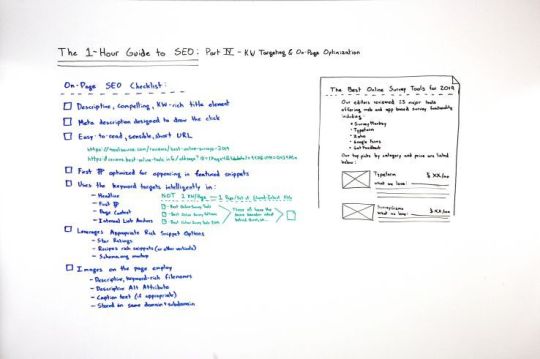
Click on the whiteboard image above to open a high resolution version in a new tab!
Video Transcription
Howdy, Moz fans. Welcome to another edition of our special One-Hour Guide to SEO. We are now on Part IV – Keyword Targeting and On-Page Optimization. So hopefully, you’ve watched Part III, where we talked about searcher satisfaction, how to make sure searchers are happy with the page content that you create and the user experience that you build for them, as well as Part II, where we talked about keyword research and how to make sure that you are targeting the right words and phrases that searchers are actually looking for, that you think you can actually rank for, and that actually get real organic click-through rate, because Google’s zero-click searches are rising.
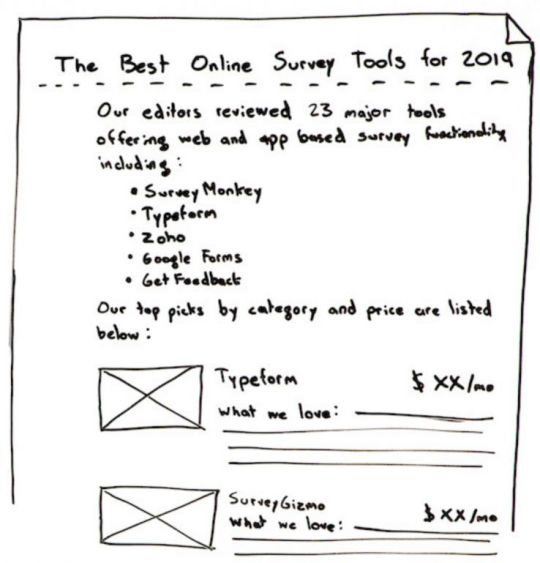
Now we’re into on-page SEO. So this is essentially taking the words and phrases that we know we want to rank for with the content that we know will help searchers accomplish their task. Now how do we make sure that the page is optimal for ranking in Google?
On-page SEO has evolved
Well, this is very different from the way it was years ago. A long time ago, and unfortunately many people still believe this to be true about SEO, it was: How do I stuff my keywords into all the right tags and places on the page? How do I take advantage of things like the meta keywords tag, which hasn’t been used in a decade, maybe two? How do I take advantage of putting all the words and phrases stuffed into my title, my URL, my description, my headline, my H2 through H7 tags, all these kinds of things?
Most of that does not matter, but some of it still does. Some of it is still important, and we need to run through what those are so that you give yourself the best possible chance for ranking.
The on-page SEO checklist
So what I’ve done here is created a sort of brief, on-page SEO checklist. This is not comprehensive, especially on the technical portion, because we’re saving that for Part V, the technical SEO section, which we will get into, of this Guide. In this checklist, some of the most important things are on here.

Descriptive, compelling, keyword-rich title element
Many of the most important things are on here, and those include things like a descriptive, compelling, keyword-rich but not stuffed title element, also called the page title or a title tag. So, for example, if I am a tool website, like toolsource.com — I made that domain name up, I assume it’s registered to somebody — and I want to rank for the “best online survey tools,” well, “The Best Online Survey Tools for 2019” is a great title tag, and it’s very different from best online survey tools, best online survey software, best online survey software 2019. You’ve seen title tags like that. You’ve seen pages that contain stuff like that. That is no longer good SEO practices.
So we want that descriptive, compelling, makes me want to click. Remember that this title is also going to show up in the search results as the title of the snippet that your website appears in.

Meta description designed to draw the click
Second, a meta description. This is still used by search engines, not for rankings though. Sort of think of it like ad text. You are drawing a click, or you’re attempting to draw the click. So what you want to do is have a description that tells people what’s on the page and inspires them, incites them, makes them want to click on your result instead of somebody else’s. That’s your chance to say, “Here’s why we’re valuable and useful.”

Easy-to-read, sensible, short URL
An easy-to-read, sensible, short URL. For example, toolsource.com/reviews/best-online-surveys-2019. Perfect, very legible, very readable. I see that in the results, I think, “Okay, I know what that page is going to be.” I see that copied and pasted somewhere on the web, I think, “I know what’s going to be at that URL. That looks relevant to me.”
Or reviews.best-online-tools.info. Okay, well, first off, that’s a freaking terrible domain name. /oldseqs?ide=17 bunch of weird letters and tab detail equals this, and UTM parameter equals that. I don’t know what this is. I don’t know what all this means. By the way, having more than one or two URL parameters is very poorly correlated with and not recommended for trying to rank in search results. So you want to try and rewrite these to be more friendly, shorter, more sensible, and readable by a human being. That will help Google as well.

First paragraph optimized for appearing in featured snippets
That first paragraph, the first paragraph of the content or the first few words of the page should be optimized for appearing in what Google calls featured snippets. Now, featured snippets is when I perform a search, for many queries, I don’t just see a list of pages. Sometimes I’ll see this box, often with an image and a bunch of descriptive text that’s drawn from the page, often from the first paragraph or two. So if you want to get that featured snippet, you have to be able to rank on page one, and you need to be optimized to answer the query right in your first paragraph. But this is an opportunity for you to be ranking in position three or four or five, but still have the featured snippet answer above all the other results. Awesome when you can do this in SEO, very, very powerful thing. Featured snippet optimization, there’s a bunch of resources on Moz’s website that we can point you to there too.
Featured Snippets: From Start to Finish
How to Discover Featured Snippet Opportunities – Whiteboard Friday
How to Target Featured Snippet Opportunities – Whiteboard Friday

Use the keyword target intelligently in…

The headline
So if I’m trying to rank for “best online survey tools,” I would try and use that in my headline. Generally speaking, I like to have the headline and the title of the piece nearly the same or exactly the same so that when someone clicks on that title, they get the same headline on the page and they don’t get this cognitive dissonance between the two.

The first paragraph
The first paragraph, we talked about.

The page content
The page’s content, you don’t want to have a page that’s talking about best online survey tools and you never mention online surveys. That would be a little weird.

Internal link anchors
An internal link anchor. So if other places on your website talk about online survey tools, you should be linking to this page. This is helpful for Google finding it, helpful for visitors finding it, and helpful to say this is the page that is about this on our website.

I do strongly recommend taking the following advice, which is we are no longer in a world where it makes sense to target one keyword per page. For example, best online survey tools, best online survey software, and best online survey tools 2019 are technically three unique keyword phrases. They have different search volumes. Slightly different results will show up for each of them. But it is no longer the case, whereas it was maybe a decade ago, that I would go create a page for each one of those separate things.
Instead, because these all share the same searcher intent, I want to go with one page, just a single URL that targets all the keywords that share the exact same searcher intent. If searchers are looking to find exactly the same thing but with slightly modified or slight variations in how they phrase things, you should have a page that serves all of those keywords with that same searcher intent rather than multiple pages that try to break those up, for a bunch of reasons. One, it’s really hard to get links to all those different pages. Getting links just period is very challenging, and you need them to rank.
Second off, the difference between those is going to be very, very subtle, and it will be awkward and seem to Google very awkward that you have these slight variations with almost the same thing. It might even look to them like duplicate or very similar or low-quality content, which can get you down-ranked. So stick to one page per set of shared intent keywords.

Leverage appropriate rich snippet options
Next, you want to leverage appropriate rich snippet options. So, for example, if you are in the recipes space, you can use a schema markup for recipes to show Google that you’ve got a picture of the recipe and a cooking time and all these different details. Google offers this in a wide variety of places. When you’re doing reviews, they offer you the star ratings. Schema.org has a full list of these, and Google’s rich snippets markup page offers a bunch more. So we’ll point you to both of those as well.

Images on the page employ…
Last, but certainly not least, because image search is such a huge portion of where Google’s search traffic comes from and goes to, it is very wise to optimize the images on the page. Image search traffic can now send significant traffic to you, and optimizing for images can sometimes mean that other people will find your images through Google images and then take them, put them on their own website and link back to you, which solves a huge problem. Getting links is very hard. Images is a great way to do it.

Descriptive, keyword-rich filenames
The images on your page should employ descriptive, keyword-rich filenames, meaning if I have one for typeform, I don’t want it to be pick one, two or three. I want it to be typeformlogo or typeformsurveysoftware as the name of the file.

Descriptive alt attributes
The alt attribute or alt tag is part of how you describe that for screen readers and other accessibility-focused devices, and Google also uses that text too.

Caption text (if appropriate)
Caption text, if that’s appropriate, if you have like a photograph and a caption describing it, you want to be descriptive of what’s actually in the picture.

Stored in same domain and subdomain
These files, in order to perform well, they generally need to be hosted on the same domain and subdomain. If, for example, all your images are stored on an Amazon Web Services domain and you don’t bother rewriting or making sure that the domain looks like it’s on toolsource.com/photos or /images here, that can cause real ranking problems. Oftentimes you won’t perform at all in Google images because they don’t associate the image with the same domain. Same subdomain as well is preferable.
If you do all these things and you nail searcher intent and you’ve got your keyword research, you are ready to move on to technical SEO and link building and then start ranking. So we’ll see you for that next edition next week. Take care.
Video transcription by Speechpad.com
Sign up for The Moz Top 10, a semimonthly mailer updating you on the top ten hottest pieces of SEO news, tips, and rad links uncovered by the Moz team. Think of it as your exclusive digest of stuff you don’t have time to hunt down but want to read!
from https://dentistry01.wordpress.com/2019/04/05/the-one-hour-guide-to-seo-keyword-targeting-on-page-optimization-whiteboard-friday/
0 notes
Text
Rebooking WrestleMania X-8
By 2002 “The Attitude Era” officially ended when Steve Austin slammed The Rock in the head with a chair his long time nemesis Vince McMahon fed him in Houston, Texas. 2002 is the period between the aftermath of The Attitude Era and what John Cena would define as “Ruthless Aggression” goes undefined. Casually lumped into the waning days of the aforementioned Attitude Era.
World Championship Wrestling went out of business for lack of money and years of a rapidly declining product. Paul Heyman’s Extreme Championship Wrestling went defunct not for a lack of interest or decline in the product, but for a lack of capital. Regardless, the WWE and Vince McMahon stood alone as kings of the wrestling universe.
Suddenly, the WWE (then the WWF) were given an embarrassment of riches. An awful lot of talented personnel found themselves without work and did not enjoy the finacial security the bigger names Hulk Hogan, Goldberg, Kevin Nash and Scott Steiner enjoyed after the demise of WCW.
Deciding it is in their best interest to introduce the new talent they had by having them pose as a band of rebels eager to takeover the WWE. The Invasion angle introduced wrestlers hardcore fans of the WWE were bred for more than a decade to hate. Rob Van Dam. Booker T. Diamond Dallas Page. Instantly made an impression on fans and carved out, at the very least, decent runs in the WWE. Only they packed the teeth to intimidate viewers. This became exemplified when numerous WWE personnel defected to the WCW/ECW alliance. Stone Cold Steve Austin and Kurt Angle switched allegiances against all logic because creatively the powers that be behind the camera did not have faith in the WCW/ECW products.
Overall, The Invasion storyline became quickly muddled in a constant string of betrayals, with The Alliance never really gaining the upper-hand in the feud as the two sides remained relatively even. It all came to its climatic finish for Survivor Series 2001. A 5-on-5 brawl between the best the WWF has to offer against the best WCW/ECW could muster up. At the last second Angle turned Babyface and slammed Austin to the canvas, The Rock got the pin and just like that Team WWF prevailed like Vince McMahon always wanted. The story devolved into another saga about the dysfunction of the McMahon family. Paul Heyman was marginalized as merely a cheerleader for ECW from the announcers table. Even though McMahon in real-life won the war, he had to show how much he did in his own universe too.
The night after Vince ceased to be a Babyface and returned to his familiar role as a Heel. Later, he introduces the New World Order to the WWE universe. Their task: take the company down from the inside. Okay. Sure. A weak premise lacking any foundation in logic. Point is, Hulk Hogan is back in a WWE ring. At the No Way Out pay-per-view the black shirted trio crashed a title match between Steve Austin and champion Chris Jericho. The three beat the snot out of the Texas Rattlesnake and with Y2J none the wiser proceeded to pin his challenger and retain his title. The NwO proceeded to beat on Austin some more before tagging his bare back in black spray paint with their initials.
Jericho went into WrestleMania 18 the champion, ultimately dropping the belt to a Babyface Triple H recently betrayed by his real-life wife, Stephenie McMahon, who sided with Jericho.
The NwO continued to raise havoc, taunting Austin and The Rock, going as far to nearly kill an injured, defenseless Rock by crashing a semi truck into a ambulance. Somehow, Rock was able to compete in a two-on-three handicap match not long after his brush with near death. The feud came to a boiling point at WrestleMania. Austin took on Scott Hall and Kevin Nash in a two-on-one handicap. While Hollywood Hogan challenged The Rock mano a mano. The good guys won out and Hogan, upon defeat turned Babyface and the NWO ceased to be relevant in the WWF despite hanging around for a couple of years.
We’ve all heard the original plans for ‘Mania that fell through because of various complications. Austin was supposed to square off against The Hulkster. Only neither wanted to job to the other and the two already having a history in WCW, the plan was scrapped. Then, it was designed to have Austin continue to feud with Hall and Nash, they were to go over in ‘Mania. Hall’s behind the scenes vices instilled a lack of confidence in creative and the plan was scrapped in favor of a easy, quick ending.
But what-if it was all different? What-if, there was more than bragging rights at stake heading into WrestleMania 18?
If you simply reverse the results of the Royal Rumble you have The Rock winning the Undisputed Title from Jericho, and Kurt Angle last eliminating Triple H to earn the right to challenge Rock at ‘Mania for the belt.
The Rock and Kurt Angle have had some brilliant singles matches together. There ain’t never been a better technical wrestler than Kurt and no one showed more razzle-dazzle in the ring than Rocky. In a vivid clash of opposing styles, they went together like peanut butter and jelly. For three consecutive WrestleMania’s The Rock headlined with the title on the line. WrestleMania 18 would be the fourth occasion in which that is the case.
There are contrasting stories on how well fans received The Rock in the moment. The conflicting reports during his match versus paint a picture of either a crowd who was split, indecisive or wholly on the side of Hogan. There isn’t a version where The Rock wasn’t viewed as second-banana. Either fans loved him, or preferred him as trash-talking Heel, or simply never cared for him. I hope the last possibility wasn’t the reality. The Rock found his footing as a Heel, made his best impressions as a Heel and as a Babyface wasn’t too bad either. Though, I preferred him as a Heel.
Nonetheless, the crowd was electric the entirety of Rock vs Hogan.
The otherwise tamed crowd roared for one match in particular and it wasn’t the subsequent Triple H vs Chris Jericho match, which by all means was the superior technical show.
But this event was based in Toronto. Hogan country. Here was the man, the myth, the legend, the gateway into so many childhoods standing before them. Of course, the ultra-Heel, murderous Hollywood Hogan was going to get the bigger, more visceral pop. By 1999 the NwO brand grew stale. Simply plopping them in the WWE universe as a fresh coat of paint was what the doctor ordered.
How Hogan worked the crowd is why people like Eric Bischoff sing his praises until he’s blue in the face. He’s seen the manipulation, the seduction of millions with his own eyes. Something no one can do quite like Hogan. The one ace up the aging legends sleeve was, in fact, his ability to captivate an entire arena that dearly missed him.
If you were the subtract The Rock from the tango is the mood any different? Possibly. Look up and watch the lukewarm reception Triple H versus Sting got. Two legends going one-on-one in the square circle in the biggest, most brightest of settings only to inspire little reaction. Was it because Trips style didn’t get the crowd into the moment? Yes. It’s also the fact Triple H was never a fan-favorite on the level of Hogan, Austin, Rock or even Angle.
You’ll need serious stakes to unglue the Toronto crowd. You need Triple H to fight for the good name of Monday Night Raw and against Hulk Hogan’s attempt to have NwO solidify itself as the sole opponent to Vince McMahon and the WWE.
The Game vs Hollywood, winner gets ownership of Smackdown. Hogan gives the people what they want and goes over on The Game. The next week, the NWO drafts little known bear of a man Brock Lesner first overall in the WWE draft the next week. Smackdown is rebranded “New World Order Wrestling.”
Why is this better? Firstly, it gives the NwO more to do after WrestleMania 18. They don’t stick around and meander until the plug is mercifully pulled on them for good. Instead of Eric Bischoff and Stephenie McMahon battling for Vince’s favor you actually have charismatic, personality driven personnel running the ship. The whole brand split gimmick was only hatched because the WWE signed a whole bunch of talent from the defunct wrestling leagues. All the drama around who is best is a farce because we all know where the money is going and the plug was never going to be pulled on Raw or Smackdown.
The New World Order Wrestling, where the Heels go over constantly and Babyfaces go to die! Is basically WCW only not run by idiots.
Triple H made a rare face turn after spending years as a womanizing, weasel Heel. His wife had left him for Chris Jericho. Trips suffered a legit quadricep muscle injury and was battling for his belt. The McMahon-Helmsley partnership which skyrocketed Hunter from mid-carder to top billing in both keyfabe and reality ended abruptly when their marriage broke off after Stephenie lied to Hunter about her being pregnant, as a way to force him to redo their wedding vows.
Stephanie aligned herself with Kurt Angle, refereeing a match between the two for the right to challenge whomever was the Undisputed Champion at ‘Mania. Naturally, Ms. McMahon was biased towards Angle leading to his victory and a brief partnership between the two. Ultimately, Stephanie choose the side of the champion Jericho. Ric Flair came out the night after Hunter losing to Angle to grant him his shot at a rematch, with Stephenie barred from the ring. Triple H was victorious setting the stage for an otherwise fantastic, but forgettable match and finish to a solidly executed feud which showcased Hunter’s ability to shift between dastardly Heel to lovable underdog.
Eventually you’ll get Lesnar breaking free from the NwO declaring himself his own man after winning the Undisputed Title from The Rock at Summerslam and single-handily puts the group into their coffins. Forever.
0 notes
Text
Once More, With Feeling
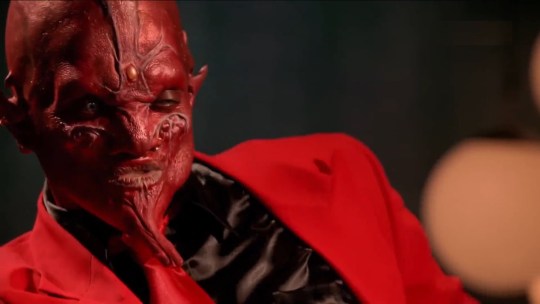
It’s time. I know you have been looking forward to this. I certainly have. It’s time for the musical episode. It’s time for “Once More, With Feeling.”
I’m not going to do too much introduction here. But I will bring up something important: Netflix does not have the full version of this episode. Parts of songs and incidental scenes are cut from the Netflix version, which does a ton of damage to the episode’s flow. Hulu is the right streaming service to watch this one on.
Let’s go!
1. Previously On, then opening credits. New opening song for this one, and pictures of the cast in front of the moon. No Tara.
2. This is also the only episode in the series with a title card, so it’s the only one that someone watching television in a linear, over-the-air format would see the title of.
3. Overture! Alarm going off for Buffy. Hinton Battle! People going about their days! Tara finds the flower Willow used for her spell and is happy because nice smelly flower. Buffy doesn’t want to get out of bed. She’s staring at her alarm clock. Xander and Anya have a wedding magazine! Giles takes a book away from Dawn. Willow and Tara doing research. Buffy drawing a picture. Giles pulls her into the back room to train.
4. I’m going to watch songs all the way through before writing about them. So no play-by-play for them, but lots of impressions!
5. “Going Through the Motions.” First off, Sarah’s got a lovely singing voice. I want to know more about the demon with the horns who delivers the “She’s not even half the girl she… ow…” line; he’s got a great design and I bet he’s up to some sort of truly sinister evil when he’s roped into Buffy’s chorus line and gets killed. Also, we could have skipped like half the runtime of “Life Serial” given that we were going to get this song; it expresses what the season is about far better than bludgeoning us with Buffy’s exhaustion over the course of an hour ever could.
6. Buffy comes into the Magic Box. People ask her about her day and Dawn. Buffy asks if anything is going on. “So, did anybody… um, last night… did anybody… um… burst into song?” Xander: “Merciful Zeus.” I think that’s my favorite Xander line ever. Willow: “We thought it was just us!” Tara: “It was bizarre. We were talking, and…” Buffy: “Like you were in a musical.” Everyone’s talking over each other. Xander: “It was very disturbing.” Giles: “What did you sing about?” Buffy: “I don’t remember. But it seemed perfectly normal.” Xander: “But disturbing, and not the natural order of things.” They speculate on how to speculate.
7. “I’ve Got a Theory/Bunnies/If We’re Together.” Three songs sort of run into each other here, and they’re all individually interesting. For those keeping score at home, we are at a total of two solo lines sung by Willow so far for the episode, though she sings (quietly) in chorus with Tara and/or Anya a lot in this one. Anyway… the first bit, “I’ve Got a Theory,” is a wonderful commentary on the show itself. The fact that every single one of the hypotheses (not theories!) posited by the cast, including Xander’s immediately-retracted witches idea (remember Amy’s mother?) and Anya’s idea about bunnies, is absolutely believable within the show’s context is telling. That the one that fits the way most TV at the time worked best (“Some kid is dreamin’/and we’re all stuck inside his wacky Broadway nightmare”) is the least credible might say more. “Bunnies” is, simply, rockin’, an utterly delightful bit of the wondrous weirdness that is Anya’s mind. And “If We’re Together” is heartbreaking, knowing what we know about Buffy and about what’s happening in the minds and lives of the other members of the cast. Buffy needs them right now, and Willow’s sanity is imploding in a dramatic fashion, Xander’s preoccupied with one of life’s more pleasant mundanities, and Giles is convinced that what Buffy needs is to stand on her own at a time when asking her to do so is akin to asking her to move the ocean. “What can’t we face if we’re together,” she asks, but the question is less relevant than it should be. They’re not together.
8. Xander is disturbed, but Willow thought it was neat. Buffy asks what’s causing it; Giles says he thought she said it doesn’t matter, and Buffy says, “I’m not exactly quaking in my stylish yet affordable boots yet, but something unnatural is going on here, and that usually doesn’t lead to hugs and puppies.” Anya asks if it’s just them. Buffy opens the door.
9. “The Mustard.” I think that might have been my favorite scene in the series.
10. “Not just us.”
11. Dawn comes into the Magic Box. She says they’ll never believe what happened at school today. Buffy, totally even tone: “Everybody started singing and dancing?” Dawn: “I gave birth to a pterodactyl.” Anya: “Oh my god. Did it sing?” Willow and Tara are whispering to each other. They need to leave to get a book. This is an excuse to go home. Dawn steals a necklace off the counter.
12. I have to comment on Tara’s dress, because it’s one of the prettiest pieces of clothing I’ve ever seen. I mean… wow, it’s lovely. They’re walking through a park. People are checking Tara out. Tara: “They were really looking at me?” Willow: “And you can’t imagine what they see in you.” Tara: “I know exactly what they see in me. You.”
13. “Under your Spell.” Okay, wow, a lot to say here. How about I start with the song as a piece of music? It’s really good. Amber Benson might have the best singing voice in the regular cast (it’s her or Anthony Stewart Head), and the arrangement is really good. This works as a piece of pop music, outside the context of the show.
INSIDE the context of the show is where it gets complicated, because there’s two songs here, both of which are being sung simultaneously. There’s the song in the moment, the expression of Tara’s feelings about Willow and about her life, and ye gods if this episode was in a less utterly miserably devastating season that would be the end of it and I’d be happy because it’s beautiful and it’s loving and it’s sexy on a level that can set the soul on fire. What it isn’t is subtle, and I love it for that. This show has had a bad habit of desexualizing the relationship between Willow and Tara, yet here they get what might be the most passionate scene about attraction and love the series has ever offered.
But then you put it into the context of the season so far, and when you do that it starts to hurt before the singing even stars. “I know exactly what they see in me. You,” Tara says to the woman who responded to them having a fight - a bad one, but still within the norms of the arguments people in relationships have - by erasing her memory of both the fight and its cause. “I’m under your spell” is the core line of the song. “You make me believe,” she sings to the one who made her believe their relationship is going swimmingly when in fact it is not. The song takes on a sinister feel within the context of the season as a whole, and its first lines, talking about Tara’s backstory and the places she was in before meeting Willow just make that all the more painful.
14. Xander thinks Tara and Willow are having sex, which means Xander has the reasoning ability God gave a goldfish. He tries not to tell Dawn what he thinks. Dawn knows what he thinks. Dawn thinks it’s romantic; Xander and Buffy think it’s not. Dawn: “Come on. Songs, dancing around. What could be wrong with that?”
15. People catching on fire is what’s wrong with that. Hinton Battle is what’s right with that!
16. Xander and Anya’s apartment. I love the geometry of their building. They’re in bed. Xander offers Anya waffle. Anya asks if he’ll make her waffles when they’re married; Xander makes a tired marriage law joke.
17. “I’ll Never Tell.” This has the best opening lines of any song yet. “This is the man that I plan to entangle isn’t he fine/My claim to fame was to maim and to mangle VENGEANCE WAS MINE!” Also, the newspaper headline. “Mayhem caused! Monsters certainly not to blame.” Less cool: The callback to “Pangs,” which was one of the episodes I’ve liked the least. This song brings up their nerves about their upcoming marriage, but the things they’re nervous about largely seem pretty mundane to me. Standard differences between people stuff. If they wanted to get into the reasons for the cold feet Xander displayed in “All the Way” in a way I’d buy, they really should have brought up his issues with his parents. That probably would have blown up the comedy in this song - and this song was very, very funny. I love the dance choreography, too - the way they move around the room. This song was great.
18. Xander and Anya are walking down the street talking to Giles. They do not like their song as much as I did. They don’t bring up “Pangs” being problematic, though. Anya did mention the missing fourth wall. “The Parking Ticket,” sung by series writer Marti Noxon, happens while they’re walking. Giles knows about the guy who burnt up. More than one person has burned up. Giles: “I was able to see the body while the police were taking witness arias.” I love Giles. Buffy is looking for leads, but she’s not into it. Xander says they need to be there for her. Giles puts a “but” at the end of a line that needs not to have a “but.”
19. Spike: “The sun sets and she appears. Come to serenade me?” They talk a bit about the singing. Spike saw a six hundred pound chirago demon singing. He hasn’t sung yet. Buffy turns down a drink. Spike doesn’t want to talk about singing. She doesn’t want to have sex with Spike. He doesn’t know a thing. He’s trying to get rid of her. Urgently. Does he feel a song coming on?
20. “Rest in Peace.” Yes. Yes he does. Buffy’s eyeroll when he starts singing is basically my whole world right now. The song’s good… catchy tune, James Marsters belts it out like a boss. It’s actually a badass bit of really creepy unrequited love rock ballad. The bit in the show where he leaps on a casket while singing is well-done, though I question why, apart from providing a stage for him to sing on (which is reason enough, in this episode), there’s a funeral happening in Sunnydale at night. This song pretty much encapsulates the Buffy/Spike story so far, and is thus creepy as hell. If someone were to sing something like this about me, I’d be really impressed all the way to the courthouse to request a restraining order right the fuck now.
21. “So, you’re not staying, then?” Heh.
22. Dawn is hiding things. Tara comes in and tells her that they have a lead on what’s going on… a demon that can be summoned who’s a lord of the dance. Dawn asks if they know who summoned it. Tara is all lovestruck. Dawn talks about the fight Willow erased from Tara’s memory. Tara doesn’t remember it, and is suddenly off-put. She’s looking at the flower in a bit of terror. She’s going to the Magic Box. Dawn says she’ll be okay.
23. “Dawn’s Lament.” She steals things. Nobody notices. Then she gets kidnapped. By puppet-looking dudes.
24. “Dawn’s Ballet.” Dawn comes to at the Bronze. On the pool table. Nobody’s there. The puppet dudes are there. They ballet-fight-chase.
25. “What You Feel.” So, Hinton Battle as the demon Sweet just explained the entire plot of the episode to us. He gets summoned, his presence makes people sing about things they’re hiding (“All those hearts lie open that must sting”) and sets people on fire by concentrating his power on them (“Plus some customers just die combusting.”) He believes Dawn summoned him, so when he leaves Earth, he’ll take her with him and she’ll be his queen. He also wants to kill the Slayer. I wonder if Sweet’s killed Slayers before? He’s… actually kind of ridiculously powerful. The song itself is wonderful. Did I mention that Hinton Battle has won three Tony awards? That’s important.
26. Buffy and Giles in the training room. Buffy is worried they’ll get a training montage from an 80s movie; Giles says that if they hear any inspirational power chords they’ll lie down until they go away. Buffy is pretty spry for a corpse. Giles asks if she’s spoken to Dawn about the incident on Halloween; she says she thought Giles took care of it, and says she’s ready. He goes to the knife and throwing axe and shuriken rack.
27. “Standing.” This song is beautifully painful. I’m going to start with something you’re likely expecting: Giles is wrong. Buffy, at the moment, needs support, needs duties taken off her shoulders, needs a goddamn therapist; she does not need to be allowed to sink or swim on her own.
But Giles thinks she needs that. He honestly believes, and I can see how he might given the information he has, that Buffy is best off without him at the moment - that she’s leaning on him in a way she’ll never stop, and she’s strong enough now to stand on her own. That the only way for her to continue to heal is for him to leave. He doesn’t want to, and it hurts him on a soul-deep level that he believes he has to go. Leaving will wound him. This song is painful because I do love Giles, and because I read it as being about stupid, pointless self-sacrifice.
Meanwhile, downstairs in the main floor of the shop, Tara walks past crying.
28. Tara has found the flower in a book. Lethe’s bramble, which is used for spells of forgetting and mind control.
29. “Under Your Spell/Standing (Reprise).” Giles continues to express the same sentiment he had in the last song. Tara’s part in this one is more interesting… the stream of consciousness of someone realizing a partner has crossed an unfixable line, but one still loves them. “I can��t adjust to this disgust we’re done and I just wish I could stay.” Meanwhile, Buffy and Willow are conversing at the front of the store while Giles and Tara sing their heartbreak. Buffy and Willow don’t know. They think life goes on.
30. Spike found a puppet guy. Willow is happy to see Tara but Tara doesn’t speak to her and Willow gets all wounded-face. Spike tells the puppet guy to sing. Music starts, then the puppet just explains what’s going on. Then he runs away. Spike: “Strong. Some day he’ll be a real boy.” Buffy: “So, Dawn’s in trouble. Must be Tuesday.” Tara apologizes; Buffy immediately dismisses the idea of it being Tara’s fault. Xander wants to do a full-on cavalry charge; Giles turns that plan down and says Buffy has to go alone. Giles says Buffy is going alone. Spike: “Don’t be a stupid git. There is no…” Giles: “If I want your opinion, Spike, I’ll… I’ll never want your opinion.” Willow suggests a confusion spell; Tara vetoes that. Spike: “Forget it, Slayer. I got your back.” Buffy: “I thought you wanted me to stay away from you. Isn’t that what you sang?” Xander and Anya make fun of Spike. Spike: “Fine. I hope you dance till you burn. You and the little bit.” That’s very Spike - obsessed, angry, violent, worshipping. Buffy is surprised they’re not coming. She asks Giles what he expects her to do; he says “Your best.”
31. “Walk Through the Fire.” A lot to talk about in the big group number too. First off… apparently, this was both the most expensive and most difficult to film scene in the series. I can see why - it’s a huge setpiece, involving a fair chunk of the Sunnydale sets the show has used through its run and a lot of coordination. Plus the fire engines at the end.
Second, “So one by one, they come to me/The distant redness as their guide/But what they’ll find ain’t what they had in mind/It’s what they have inside.” Sweet again lays out the core of his threat - his power to incinerate isn’t nearly the danger that his power to lay secrets bare is.
Buffy is done. She was done in “The Gift,” and everything that’s happened since then has made her more aware just how done she is. Honestly, her duty should have been done at “Prophecy Girl,” when the Slayer line passed from her to Kendra. In “The Gift,” though, she ended her story on her own terms, only to have Willow shred that ending and insist on adding a few new chapters. If Buffy can’t have the ending on her terms, going to confront a being far more powerful than she is while knowing she’s given up (remember “Fool for Love?”) will at least let her have it be over again. Giles, meanwhile, rethinks his decision on sending her alone, and Willow gets a third solo line.
32. “Showtime.” Buffy is at the Bronze, and finds Sweet and Dawn there. Buffy snarks with Sweet a bit, and Dawn swears she didn’t summon him. Buffy offers to go to Hell with Sweet instead of Dawn. Sweet: “What if I kill you?” Buffy: “Trust me. Won’t help.” Sweet: “That’s gloomy.” Buffy: “That’s life.” He asks if life’s a miraculous thing. Buffy: “I think you already know the answer.”
33. “Something to Sing About.” There’s a lot I could say about this song - how tightly-written the lyrics are, the disconcerting amelodism in the bits where Buffy lists off things to live for - but I want to focus on a few moments. The first is the very beginning, the facial acting Sarah Michelle Gellar does while singing the first few lines. Buffy, here, is dragging herself into character - snark and passion, focused on an enemy. That doesn’t last. Second, toward the end of the song, when she’s told them that she was in Heaven (and look at Willow’s face when she does), and she begs Sweet, “Please, give me something (to sing about),” and Sweet gets this almost regretful look in his eyes as he shakes his head. He’s evil, so he wouldn’t, and he’s got nothing, so he can’t, but even he seems moved here. And delighted… there’s also joy there. He’s watched one of the most powerful beings on the planet break for his amusement. Third, Spike’s insight. We see him have really important insights before, things one only understands if one isn’t a person, and this might be more important than his understanding of why opening Glory’s portal has to use blood. He knows what it is to die, to cease to live. He and Buffy are the only people in the room that’s true of, though Tara has a similar experience. Fourth, “The hardest thing in this world is living in it.” Dawn offers Buffy the same words here that Buffy offered Dawn before leaping to her death in “The Gift,” and it resonates very well. Fourth, just as the last few notes play, Tara, holding Willow’s shoulder and comforting her. “We’re done,” she sang in the Reprise, but she still loves Willow, and love moves us to empathy and grace even when a relationship can’t be salvaged. This episode needs no action climax; it has this song.
34. Sweet: “Now, that was a show stopper. Not quite the that I was looking for…” Then Willow, who is the only person here who might be on Sweet’s level, threatens him. Sweet smells power. “I guess the little missus and I should be on our way.” Giles: “That’s never going to happen.” Sweet: “I don’t make the rules. She summoned me.” Dawn again insists she didn’t. He points out that what she’s wearing is his talisman. She says she found it on the floor… that’s a lie. But she didn’t, in fact, summon him. Giles says that if it was in the shop, it was one of them… it turns out it was Xander. He thought there would be dances and songs, and wanted to make sure they’d get a happy ending. Sweet is annoyed. Xander asks if he has to be Sweet’s queen. Sweet: “It’s tempting… but I think we’ll waive that clause just this once. Big smiles, everyone. You beat the bad guy.”
35. “What You Feel (Reprise).” “All those secrets you’ve been concealing’/Say you’re happy now, once more with feeling/Now I gotta run/See you all/In HELLLLLL!” Also, his expression when he sings “And there’s not a one who can say this ended well.” This was a pyrrhic victory for everyone involved, which I didn’t think was possible.
36. “Where Do We Go From Here?” Big group sing about being lost. “The battle’s done and we kinda won so we sound our victory cheer/Where do we go from here?” Awkwardness at the start of the song. “Understand we go hand in hand but we walk alone in fear.” That moment might have my favorite choreography in the episode. I love Spike breaking out of the song. “Bugger this.” “The curtains close on a kiss God knows we can tell the end is near.” Buffy meets Spike outside. “The day you suss out what you do want, there’ll probably be a parade. Seventy-six bloody trombones.” From watching Sound! Euphonium, that would be a LOT of trombones. That would be nearly a concert band and a half worth of just trombones. They sing the opening bars of their songs - “Walk through the Fire” from Buffy and “Rest in Peace” from Spike - and then they kiss. Episode end. Different ending credit song. Plus a big The End card in the style of classic (as in, 1940s-1950s) musical films. The Mutant Enemy sings “Grr, Argh!”
Overall: This is the best episode so far this season. This is the best episode since “Hush.” It belongs with “Hush,” “Amends,” and the best parts of the Faith arc in the list of best episodes of the series. This is how you do an episode about depression and sadness and being overwhelmed and miserable and make it not merely watchable but brilliant.
There are reasons that most of the great theater of the twentieth century, and much of the best cinema of its first half, comes in the form of musicals. You put an idea to song and the idea becomes easier to think about while still being entertained. Stephen Sondheim has done truly great musicals about the mundanity and loneliness of modern life (“Company”) and the assassinations of various Presidents of the United States (“Assassins,”) and they’re actively fun to watch while still making poignant emotional points. That’s the power of a well-composed musical.
It does, however, kind of make me wish I’d skipped much of the last three or four episodes. It tells me their stories in song form, which is a far more enjoyable way of seeing them than actually sitting through them. “Show, don’t tell,” the old adage goes, but if showing takes three hours of television, most of which I’m going to be miserable for because people I like are being tormented in gruesome emotional detail while telling involves a peppy song and dance number, I’m quite frankly fine with telling.
Even in its full version, which takes up nearly a full hour (they cut back drastically on the number of commercials that aired during this episode’s first run), “Once More With Feeling” is short for a musical. The cartoon version of “The Lion King” runs for 89 minutes, and the stage performance goes for 150 minutes including a single brief intermission. But it runs as long as it needs to, and tells its story well.
Sweet is one of the show’s best villains, and, apart from possibly the First Evil from “Amends,” probably the best one-episode monster the show’s given us. Among the seasonal villains, I’d probably place the Mayor and Glory above him.
This episode is a reminder, in the midst of a truly dismal time, how great a show Buffy the Vampire Slayer can be.
#buffy the vampire slayer#once more with feeling#buffy season 6#season 6#hinton battle#best episodes
4 notes
·
View notes
Text
The One-Hour Guide to SEO: Keyword Targeting & On-Page Optimization - Whiteboard Friday
Posted by randfish
We've covered strategy, keyword research, and how to satisfy searcher intent — now it's time to tackle optimizing the webpage itself! In the fourth part of the One-Hour Guide to SEO, Rand offers up an on-page SEO checklist to start you off on your way towards perfectly optimized and keyword-targeted pages.
If you missed them, check out the other episodes in the series so far:
The One-Hour Guide to SEO, Part 1: SEO Strategy
The One-Hour Guide to SEO, Part 2: Keyword Research
The One-Hour Guide to SEO, Part 3: Searcher Satisfaction
Click on the whiteboard image above to open a high resolution version in a new tab!
Video Transcription
Howdy, Moz fans. Welcome to another edition of our special One-Hour Guide to SEO. We are now on Part IV – Keyword Targeting and On-Page Optimization. So hopefully, you've watched Part III, where we talked about searcher satisfaction, how to make sure searchers are happy with the page content that you create and the user experience that you build for them, as well as Part II, where we talked about keyword research and how to make sure that you are targeting the right words and phrases that searchers are actually looking for, that you think you can actually rank for, and that actually get real organic click-through rate, because Google's zero-click searches are rising.
Now we're into on-page SEO. So this is essentially taking the words and phrases that we know we want to rank for with the content that we know will help searchers accomplish their task. Now how do we make sure that the page is optimal for ranking in Google?
On-page SEO has evolved
Well, this is very different from the way it was years ago. A long time ago, and unfortunately many people still believe this to be true about SEO, it was: How do I stuff my keywords into all the right tags and places on the page? How do I take advantage of things like the meta keywords tag, which hasn't been used in a decade, maybe two? How do I take advantage of putting all the words and phrases stuffed into my title, my URL, my description, my headline, my H2 through H7 tags, all these kinds of things?
Most of that does not matter, but some of it still does. Some of it is still important, and we need to run through what those are so that you give yourself the best possible chance for ranking.
The on-page SEO checklist
So what I've done here is created a sort of brief, on-page SEO checklist. This is not comprehensive, especially on the technical portion, because we're saving that for Part V, the technical SEO section, which we will get into, of this Guide. In this checklist, some of the most important things are on here.
☑ Descriptive, compelling, keyword-rich title element
Many of the most important things are on here, and those include things like a descriptive, compelling, keyword-rich but not stuffed title element, also called the page title or a title tag. So, for example, if I am a tool website, like toolsource.com — I made that domain name up, I assume it's registered to somebody — and I want to rank for the "best online survey tools," well, "The Best Online Survey Tools for 2019" is a great title tag, and it's very different from best online survey tools, best online survey software, best online survey software 2019. You've seen title tags like that. You've seen pages that contain stuff like that. That is no longer good SEO practices.
So we want that descriptive, compelling, makes me want to click. Remember that this title is also going to show up in the search results as the title of the snippet that your website appears in.
☑ Meta description designed to draw the click
Second, a meta description. This is still used by search engines, not for rankings though. Sort of think of it like ad text. You are drawing a click, or you're attempting to draw the click. So what you want to do is have a description that tells people what's on the page and inspires them, incites them, makes them want to click on your result instead of somebody else's. That's your chance to say, "Here's why we're valuable and useful."
☑ Easy-to-read, sensible, short URL
An easy-to-read, sensible, short URL. For example, toolsource.com/reviews/best-online-surveys-2019. Perfect, very legible, very readable. I see that in the results, I think, "Okay, I know what that page is going to be." I see that copied and pasted somewhere on the web, I think, "I know what's going to be at that URL. That looks relevant to me."
Or reviews.best-online-tools.info. Okay, well, first off, that's a freaking terrible domain name. /oldseqs?ide=17 bunch of weird letters and tab detail equals this, and UTM parameter equals that. I don't know what this is. I don't know what all this means. By the way, having more than one or two URL parameters is very poorly correlated with and not recommended for trying to rank in search results. So you want to try and rewrite these to be more friendly, shorter, more sensible, and readable by a human being. That will help Google as well.
☑ First paragraph optimized for appearing in featured snippets
That first paragraph, the first paragraph of the content or the first few words of the page should be optimized for appearing in what Google calls featured snippets. Now, featured snippets is when I perform a search, for many queries, I don't just see a list of pages. Sometimes I'll see this box, often with an image and a bunch of descriptive text that's drawn from the page, often from the first paragraph or two. So if you want to get that featured snippet, you have to be able to rank on page one, and you need to be optimized to answer the query right in your first paragraph. But this is an opportunity for you to be ranking in position three or four or five, but still have the featured snippet answer above all the other results. Awesome when you can do this in SEO, very, very powerful thing. Featured snippet optimization, there's a bunch of resources on Moz's website that we can point you to there too.
Featured Snippets: From Start to Finish
How to Discover Featured Snippet Opportunities - Whiteboard Friday
How to Target Featured Snippet Opportunities - Whiteboard Friday
☑ Use the keyword target intelligently in...
☑ The headline
So if I'm trying to rank for "best online survey tools," I would try and use that in my headline. Generally speaking, I like to have the headline and the title of the piece nearly the same or exactly the same so that when someone clicks on that title, they get the same headline on the page and they don't get this cognitive dissonance between the two.
☑ The first paragraph
The first paragraph, we talked about.
☑ The page content
The page's content, you don't want to have a page that's talking about best online survey tools and you never mention online surveys. That would be a little weird.
☑ Internal link anchors
An internal link anchor. So if other places on your website talk about online survey tools, you should be linking to this page. This is helpful for Google finding it, helpful for visitors finding it, and helpful to say this is the page that is about this on our website.
I do strongly recommend taking the following advice, which is we are no longer in a world where it makes sense to target one keyword per page. For example, best online survey tools, best online survey software, and best online survey tools 2019 are technically three unique keyword phrases. They have different search volumes. Slightly different results will show up for each of them. But it is no longer the case, whereas it was maybe a decade ago, that I would go create a page for each one of those separate things.
Instead, because these all share the same searcher intent, I want to go with one page, just a single URL that targets all the keywords that share the exact same searcher intent. If searchers are looking to find exactly the same thing but with slightly modified or slight variations in how they phrase things, you should have a page that serves all of those keywords with that same searcher intent rather than multiple pages that try to break those up, for a bunch of reasons. One, it's really hard to get links to all those different pages. Getting links just period is very challenging, and you need them to rank.
Second off, the difference between those is going to be very, very subtle, and it will be awkward and seem to Google very awkward that you have these slight variations with almost the same thing. It might even look to them like duplicate or very similar or low-quality content, which can get you down-ranked. So stick to one page per set of shared intent keywords.
☑ Leverage appropriate rich snippet options
Next, you want to leverage appropriate rich snippet options. So, for example, if you are in the recipes space, you can use a schema markup for recipes to show Google that you've got a picture of the recipe and a cooking time and all these different details. Google offers this in a wide variety of places. When you're doing reviews, they offer you the star ratings. Schema.org has a full list of these, and Google's rich snippets markup page offers a bunch more. So we'll point you to both of those as well.
☑ Images on the page employ...
Last, but certainly not least, because image search is such a huge portion of where Google's search traffic comes from and goes to, it is very wise to optimize the images on the page. Image search traffic can now send significant traffic to you, and optimizing for images can sometimes mean that other people will find your images through Google images and then take them, put them on their own website and link back to you, which solves a huge problem. Getting links is very hard. Images is a great way to do it.
☑ Descriptive, keyword-rich filenames
The images on your page should employ descriptive, keyword-rich filenames, meaning if I have one for typeform, I don't want it to be pick one, two or three. I want it to be typeformlogo or typeformsurveysoftware as the name of the file.
☑ Descriptive alt attributes
The alt attribute or alt tag is part of how you describe that for screen readers and other accessibility-focused devices, and Google also uses that text too.
☑ Caption text (if appropriate)
Caption text, if that's appropriate, if you have like a photograph and a caption describing it, you want to be descriptive of what's actually in the picture.
☑ Stored in same domain and subdomain
These files, in order to perform well, they generally need to be hosted on the same domain and subdomain. If, for example, all your images are stored on an Amazon Web Services domain and you don't bother rewriting or making sure that the domain looks like it's on toolsource.com/photos or /images here, that can cause real ranking problems. Oftentimes you won't perform at all in Google images because they don't associate the image with the same domain. Same subdomain as well is preferable.
If you do all these things and you nail searcher intent and you've got your keyword research, you are ready to move on to technical SEO and link building and then start ranking. So we'll see you for that next edition next week. Take care.
Video transcription by Speechpad.com
Sign up for The Moz Top 10, a semimonthly mailer updating you on the top ten hottest pieces of SEO news, tips, and rad links uncovered by the Moz team. Think of it as your exclusive digest of stuff you don't have time to hunt down but want to read!
from The Moz Blog http://tracking.feedpress.it/link/9375/11228159
0 notes
Text
The One-Hour Guide to SEO: Keyword Targeting & On-Page Optimization - Whiteboard Friday
Posted by randfish
We've covered strategy, keyword research, and how to satisfy searcher intent — now it's time to tackle optimizing the webpage itself! In the fourth part of the One-Hour Guide to SEO, Rand offers up an on-page SEO checklist to start you off on your way towards perfectly optimized and keyword-targeted pages.
If you missed them, check out the other episodes in the series so far:
The One-Hour Guide to SEO, Part 1: SEO Strategy
The One-Hour Guide to SEO, Part 2: Keyword Research
The One-Hour Guide to SEO, Part 3: Searcher Satisfaction
Click on the whiteboard image above to open a high resolution version in a new tab!
Video Transcription
Howdy, Moz fans. Welcome to another edition of our special One-Hour Guide to SEO. We are now on Part IV – Keyword Targeting and On-Page Optimization. So hopefully, you've watched Part III, where we talked about searcher satisfaction, how to make sure searchers are happy with the page content that you create and the user experience that you build for them, as well as Part II, where we talked about keyword research and how to make sure that you are targeting the right words and phrases that searchers are actually looking for, that you think you can actually rank for, and that actually get real organic click-through rate, because Google's zero-click searches are rising.
Now we're into on-page SEO. So this is essentially taking the words and phrases that we know we want to rank for with the content that we know will help searchers accomplish their task. Now how do we make sure that the page is optimal for ranking in Google?
On-page SEO has evolved
Well, this is very different from the way it was years ago. A long time ago, and unfortunately many people still believe this to be true about SEO, it was: How do I stuff my keywords into all the right tags and places on the page? How do I take advantage of things like the meta keywords tag, which hasn't been used in a decade, maybe two? How do I take advantage of putting all the words and phrases stuffed into my title, my URL, my description, my headline, my H2 through H7 tags, all these kinds of things?
Most of that does not matter, but some of it still does. Some of it is still important, and we need to run through what those are so that you give yourself the best possible chance for ranking.
The on-page SEO checklist
So what I've done here is created a sort of brief, on-page SEO checklist. This is not comprehensive, especially on the technical portion, because we're saving that for Part V, the technical SEO section, which we will get into, of this Guide. In this checklist, some of the most important things are on here.
☑ Descriptive, compelling, keyword-rich title element
Many of the most important things are on here, and those include things like a descriptive, compelling, keyword-rich but not stuffed title element, also called the page title or a title tag. So, for example, if I am a tool website, like toolsource.com — I made that domain name up, I assume it's registered to somebody — and I want to rank for the "best online survey tools," well, "The Best Online Survey Tools for 2019" is a great title tag, and it's very different from best online survey tools, best online survey software, best online survey software 2019. You've seen title tags like that. You've seen pages that contain stuff like that. That is no longer good SEO practices.
So we want that descriptive, compelling, makes me want to click. Remember that this title is also going to show up in the search results as the title of the snippet that your website appears in.
☑ Meta description designed to draw the click
Second, a meta description. This is still used by search engines, not for rankings though. Sort of think of it like ad text. You are drawing a click, or you're attempting to draw the click. So what you want to do is have a description that tells people what's on the page and inspires them, incites them, makes them want to click on your result instead of somebody else's. That's your chance to say, "Here's why we're valuable and useful."
☑ Easy-to-read, sensible, short URL
An easy-to-read, sensible, short URL. For example, toolsource.com/reviews/best-online-surveys-2019. Perfect, very legible, very readable. I see that in the results, I think, "Okay, I know what that page is going to be." I see that copied and pasted somewhere on the web, I think, "I know what's going to be at that URL. That looks relevant to me."
Or reviews.best-online-tools.info. Okay, well, first off, that's a freaking terrible domain name. /oldseqs?ide=17 bunch of weird letters and tab detail equals this, and UTM parameter equals that. I don't know what this is. I don't know what all this means. By the way, having more than one or two URL parameters is very poorly correlated with and not recommended for trying to rank in search results. So you want to try and rewrite these to be more friendly, shorter, more sensible, and readable by a human being. That will help Google as well.
☑ First paragraph optimized for appearing in featured snippets
That first paragraph, the first paragraph of the content or the first few words of the page should be optimized for appearing in what Google calls featured snippets. Now, featured snippets is when I perform a search, for many queries, I don't just see a list of pages. Sometimes I'll see this box, often with an image and a bunch of descriptive text that's drawn from the page, often from the first paragraph or two. So if you want to get that featured snippet, you have to be able to rank on page one, and you need to be optimized to answer the query right in your first paragraph. But this is an opportunity for you to be ranking in position three or four or five, but still have the featured snippet answer above all the other results. Awesome when you can do this in SEO, very, very powerful thing. Featured snippet optimization, there's a bunch of resources on Moz's website that we can point you to there too.
Featured Snippets: From Start to Finish
How to Discover Featured Snippet Opportunities - Whiteboard Friday
How to Target Featured Snippet Opportunities - Whiteboard Friday
☑ Use the keyword target intelligently in...
☑ The headline
So if I'm trying to rank for "best online survey tools," I would try and use that in my headline. Generally speaking, I like to have the headline and the title of the piece nearly the same or exactly the same so that when someone clicks on that title, they get the same headline on the page and they don't get this cognitive dissonance between the two.
☑ The first paragraph
The first paragraph, we talked about.
☑ The page content
The page's content, you don't want to have a page that's talking about best online survey tools and you never mention online surveys. That would be a little weird.
☑ Internal link anchors
An internal link anchor. So if other places on your website talk about online survey tools, you should be linking to this page. This is helpful for Google finding it, helpful for visitors finding it, and helpful to say this is the page that is about this on our website.
I do strongly recommend taking the following advice, which is we are no longer in a world where it makes sense to target one keyword per page. For example, best online survey tools, best online survey software, and best online survey tools 2019 are technically three unique keyword phrases. They have different search volumes. Slightly different results will show up for each of them. But it is no longer the case, whereas it was maybe a decade ago, that I would go create a page for each one of those separate things.
Instead, because these all share the same searcher intent, I want to go with one page, just a single URL that targets all the keywords that share the exact same searcher intent. If searchers are looking to find exactly the same thing but with slightly modified or slight variations in how they phrase things, you should have a page that serves all of those keywords with that same searcher intent rather than multiple pages that try to break those up, for a bunch of reasons. One, it's really hard to get links to all those different pages. Getting links just period is very challenging, and you need them to rank.
Second off, the difference between those is going to be very, very subtle, and it will be awkward and seem to Google very awkward that you have these slight variations with almost the same thing. It might even look to them like duplicate or very similar or low-quality content, which can get you down-ranked. So stick to one page per set of shared intent keywords.
☑ Leverage appropriate rich snippet options
Next, you want to leverage appropriate rich snippet options. So, for example, if you are in the recipes space, you can use a schema markup for recipes to show Google that you've got a picture of the recipe and a cooking time and all these different details. Google offers this in a wide variety of places. When you're doing reviews, they offer you the star ratings. Schema.org has a full list of these, and Google's rich snippets markup page offers a bunch more. So we'll point you to both of those as well.
☑ Images on the page employ...
Last, but certainly not least, because image search is such a huge portion of where Google's search traffic comes from and goes to, it is very wise to optimize the images on the page. Image search traffic can now send significant traffic to you, and optimizing for images can sometimes mean that other people will find your images through Google images and then take them, put them on their own website and link back to you, which solves a huge problem. Getting links is very hard. Images is a great way to do it.
☑ Descriptive, keyword-rich filenames
The images on your page should employ descriptive, keyword-rich filenames, meaning if I have one for typeform, I don't want it to be pick one, two or three. I want it to be typeformlogo or typeformsurveysoftware as the name of the file.
☑ Descriptive alt attributes
The alt attribute or alt tag is part of how you describe that for screen readers and other accessibility-focused devices, and Google also uses that text too.
☑ Caption text (if appropriate)
Caption text, if that's appropriate, if you have like a photograph and a caption describing it, you want to be descriptive of what's actually in the picture.
☑ Stored in same domain and subdomain
These files, in order to perform well, they generally need to be hosted on the same domain and subdomain. If, for example, all your images are stored on an Amazon Web Services domain and you don't bother rewriting or making sure that the domain looks like it's on toolsource.com/photos or /images here, that can cause real ranking problems. Oftentimes you won't perform at all in Google images because they don't associate the image with the same domain. Same subdomain as well is preferable.
If you do all these things and you nail searcher intent and you've got your keyword research, you are ready to move on to technical SEO and link building and then start ranking. So we'll see you for that next edition next week. Take care.
Video transcription by Speechpad.com
Sign up for The Moz Top 10, a semimonthly mailer updating you on the top ten hottest pieces of SEO news, tips, and rad links uncovered by the Moz team. Think of it as your exclusive digest of stuff you don't have time to hunt down but want to read!
from The Moz Blog http://bit.ly/2Kd0vY3 via IFTTT
0 notes
Text
The One-Hour Guide to SEO: Keyword Targeting & On-Page Optimization - Whiteboard Friday
Posted by randfish
We've covered strategy, keyword research, and how to satisfy searcher intent — now it's time to tackle optimizing the webpage itself! In the fourth part of the One-Hour Guide to SEO, Rand offers up an on-page SEO checklist to start you off on your way towards perfectly optimized and keyword-targeted pages.
If you missed them, check out the other episodes in the series so far:
The One-Hour Guide to SEO, Part 1: SEO Strategy
The One-Hour Guide to SEO, Part 2: Keyword Research
The One-Hour Guide to SEO, Part 3: Searcher Satisfaction
Click on the whiteboard image above to open a high resolution version in a new tab!
Video Transcription
Howdy, Moz fans. Welcome to another edition of our special One-Hour Guide to SEO. We are now on Part IV – Keyword Targeting and On-Page Optimization. So hopefully, you've watched Part III, where we talked about searcher satisfaction, how to make sure searchers are happy with the page content that you create and the user experience that you build for them, as well as Part II, where we talked about keyword research and how to make sure that you are targeting the right words and phrases that searchers are actually looking for, that you think you can actually rank for, and that actually get real organic click-through rate, because Google's zero-click searches are rising.
Now we're into on-page SEO. So this is essentially taking the words and phrases that we know we want to rank for with the content that we know will help searchers accomplish their task. Now how do we make sure that the page is optimal for ranking in Google?
On-page SEO has evolved
Well, this is very different from the way it was years ago. A long time ago, and unfortunately many people still believe this to be true about SEO, it was: How do I stuff my keywords into all the right tags and places on the page? How do I take advantage of things like the meta keywords tag, which hasn't been used in a decade, maybe two? How do I take advantage of putting all the words and phrases stuffed into my title, my URL, my description, my headline, my H2 through H7 tags, all these kinds of things?
Most of that does not matter, but some of it still does. Some of it is still important, and we need to run through what those are so that you give yourself the best possible chance for ranking.
The on-page SEO checklist
So what I've done here is created a sort of brief, on-page SEO checklist. This is not comprehensive, especially on the technical portion, because we're saving that for Part V, the technical SEO section, which we will get into, of this Guide. In this checklist, some of the most important things are on here.
☑ Descriptive, compelling, keyword-rich title element
Many of the most important things are on here, and those include things like a descriptive, compelling, keyword-rich but not stuffed title element, also called the page title or a title tag. So, for example, if I am a tool website, like toolsource.com — I made that domain name up, I assume it's registered to somebody — and I want to rank for the "best online survey tools," well, "The Best Online Survey Tools for 2019" is a great title tag, and it's very different from best online survey tools, best online survey software, best online survey software 2019. You've seen title tags like that. You've seen pages that contain stuff like that. That is no longer good SEO practices.
So we want that descriptive, compelling, makes me want to click. Remember that this title is also going to show up in the search results as the title of the snippet that your website appears in.
☑ Meta description designed to draw the click
Second, a meta description. This is still used by search engines, not for rankings though. Sort of think of it like ad text. You are drawing a click, or you're attempting to draw the click. So what you want to do is have a description that tells people what's on the page and inspires them, incites them, makes them want to click on your result instead of somebody else's. That's your chance to say, "Here's why we're valuable and useful."
☑ Easy-to-read, sensible, short URL
An easy-to-read, sensible, short URL. For example, toolsource.com/reviews/best-online-surveys-2019. Perfect, very legible, very readable. I see that in the results, I think, "Okay, I know what that page is going to be." I see that copied and pasted somewhere on the web, I think, "I know what's going to be at that URL. That looks relevant to me."
Or reviews.best-online-tools.info. Okay, well, first off, that's a freaking terrible domain name. /oldseqs?ide=17 bunch of weird letters and tab detail equals this, and UTM parameter equals that. I don't know what this is. I don't know what all this means. By the way, having more than one or two URL parameters is very poorly correlated with and not recommended for trying to rank in search results. So you want to try and rewrite these to be more friendly, shorter, more sensible, and readable by a human being. That will help Google as well.
☑ First paragraph optimized for appearing in featured snippets
That first paragraph, the first paragraph of the content or the first few words of the page should be optimized for appearing in what Google calls featured snippets. Now, featured snippets is when I perform a search, for many queries, I don't just see a list of pages. Sometimes I'll see this box, often with an image and a bunch of descriptive text that's drawn from the page, often from the first paragraph or two. So if you want to get that featured snippet, you have to be able to rank on page one, and you need to be optimized to answer the query right in your first paragraph. But this is an opportunity for you to be ranking in position three or four or five, but still have the featured snippet answer above all the other results. Awesome when you can do this in SEO, very, very powerful thing. Featured snippet optimization, there's a bunch of resources on Moz's website that we can point you to there too.
Featured Snippets: From Start to Finish
How to Discover Featured Snippet Opportunities - Whiteboard Friday
How to Target Featured Snippet Opportunities - Whiteboard Friday
☑ Use the keyword target intelligently in...
☑ The headline
So if I'm trying to rank for "best online survey tools," I would try and use that in my headline. Generally speaking, I like to have the headline and the title of the piece nearly the same or exactly the same so that when someone clicks on that title, they get the same headline on the page and they don't get this cognitive dissonance between the two.
☑ The first paragraph
The first paragraph, we talked about.
☑ The page content
The page's content, you don't want to have a page that's talking about best online survey tools and you never mention online surveys. That would be a little weird.
☑ Internal link anchors
An internal link anchor. So if other places on your website talk about online survey tools, you should be linking to this page. This is helpful for Google finding it, helpful for visitors finding it, and helpful to say this is the page that is about this on our website.
I do strongly recommend taking the following advice, which is we are no longer in a world where it makes sense to target one keyword per page. For example, best online survey tools, best online survey software, and best online survey tools 2019 are technically three unique keyword phrases. They have different search volumes. Slightly different results will show up for each of them. But it is no longer the case, whereas it was maybe a decade ago, that I would go create a page for each one of those separate things.
Instead, because these all share the same searcher intent, I want to go with one page, just a single URL that targets all the keywords that share the exact same searcher intent. If searchers are looking to find exactly the same thing but with slightly modified or slight variations in how they phrase things, you should have a page that serves all of those keywords with that same searcher intent rather than multiple pages that try to break those up, for a bunch of reasons. One, it's really hard to get links to all those different pages. Getting links just period is very challenging, and you need them to rank.
Second off, the difference between those is going to be very, very subtle, and it will be awkward and seem to Google very awkward that you have these slight variations with almost the same thing. It might even look to them like duplicate or very similar or low-quality content, which can get you down-ranked. So stick to one page per set of shared intent keywords.
☑ Leverage appropriate rich snippet options
Next, you want to leverage appropriate rich snippet options. So, for example, if you are in the recipes space, you can use a schema markup for recipes to show Google that you've got a picture of the recipe and a cooking time and all these different details. Google offers this in a wide variety of places. When you're doing reviews, they offer you the star ratings. Schema.org has a full list of these, and Google's rich snippets markup page offers a bunch more. So we'll point you to both of those as well.
☑ Images on the page employ...
Last, but certainly not least, because image search is such a huge portion of where Google's search traffic comes from and goes to, it is very wise to optimize the images on the page. Image search traffic can now send significant traffic to you, and optimizing for images can sometimes mean that other people will find your images through Google images and then take them, put them on their own website and link back to you, which solves a huge problem. Getting links is very hard. Images is a great way to do it.
☑ Descriptive, keyword-rich filenames
The images on your page should employ descriptive, keyword-rich filenames, meaning if I have one for typeform, I don't want it to be pick one, two or three. I want it to be typeformlogo or typeformsurveysoftware as the name of the file.
☑ Descriptive alt attributes
The alt attribute or alt tag is part of how you describe that for screen readers and other accessibility-focused devices, and Google also uses that text too.
☑ Caption text (if appropriate)
Caption text, if that's appropriate, if you have like a photograph and a caption describing it, you want to be descriptive of what's actually in the picture.
☑ Stored in same domain and subdomain
These files, in order to perform well, they generally need to be hosted on the same domain and subdomain. If, for example, all your images are stored on an Amazon Web Services domain and you don't bother rewriting or making sure that the domain looks like it's on toolsource.com/photos or /images here, that can cause real ranking problems. Oftentimes you won't perform at all in Google images because they don't associate the image with the same domain. Same subdomain as well is preferable.
If you do all these things and you nail searcher intent and you've got your keyword research, you are ready to move on to technical SEO and link building and then start ranking. So we'll see you for that next edition next week. Take care.
Video transcription by Speechpad.com
Sign up for The Moz Top 10, a semimonthly mailer updating you on the top ten hottest pieces of SEO news, tips, and rad links uncovered by the Moz team. Think of it as your exclusive digest of stuff you don't have time to hunt down but want to read!
from The Moz Blog http://tracking.feedpress.it/link/9375/11228159
0 notes
Text
The One-Hour Guide to SEO: Keyword Targeting & On-Page Optimization - Whiteboard Friday
Posted by randfish
We've covered strategy, keyword research, and how to satisfy searcher intent — now it's time to tackle optimizing the webpage itself! In the fourth part of the One-Hour Guide to SEO, Rand offers up an on-page SEO checklist to start you off on your way towards perfectly optimized and keyword-targeted pages.
If you missed them, check out the other episodes in the series so far:
The One-Hour Guide to SEO, Part 1: SEO Strategy
The One-Hour Guide to SEO, Part 2: Keyword Research
The One-Hour Guide to SEO, Part 3: Searcher Satisfaction
Click on the whiteboard image above to open a high resolution version in a new tab!
Video Transcription
Howdy, Moz fans. Welcome to another edition of our special One-Hour Guide to SEO. We are now on Part IV – Keyword Targeting and On-Page Optimization. So hopefully, you've watched Part III, where we talked about searcher satisfaction, how to make sure searchers are happy with the page content that you create and the user experience that you build for them, as well as Part II, where we talked about keyword research and how to make sure that you are targeting the right words and phrases that searchers are actually looking for, that you think you can actually rank for, and that actually get real organic click-through rate, because Google's zero-click searches are rising.
Now we're into on-page SEO. So this is essentially taking the words and phrases that we know we want to rank for with the content that we know will help searchers accomplish their task. Now how do we make sure that the page is optimal for ranking in Google?
On-page SEO has evolved
Well, this is very different from the way it was years ago. A long time ago, and unfortunately many people still believe this to be true about SEO, it was: How do I stuff my keywords into all the right tags and places on the page? How do I take advantage of things like the meta keywords tag, which hasn't been used in a decade, maybe two? How do I take advantage of putting all the words and phrases stuffed into my title, my URL, my description, my headline, my H2 through H7 tags, all these kinds of things?
Most of that does not matter, but some of it still does. Some of it is still important, and we need to run through what those are so that you give yourself the best possible chance for ranking.
The on-page SEO checklist
So what I've done here is created a sort of brief, on-page SEO checklist. This is not comprehensive, especially on the technical portion, because we're saving that for Part V, the technical SEO section, which we will get into, of this Guide. In this checklist, some of the most important things are on here.
☑ Descriptive, compelling, keyword-rich title element
Many of the most important things are on here, and those include things like a descriptive, compelling, keyword-rich but not stuffed title element, also called the page title or a title tag. So, for example, if I am a tool website, like toolsource.com — I made that domain name up, I assume it's registered to somebody — and I want to rank for the "best online survey tools," well, "The Best Online Survey Tools for 2019" is a great title tag, and it's very different from best online survey tools, best online survey software, best online survey software 2019. You've seen title tags like that. You've seen pages that contain stuff like that. That is no longer good SEO practices.
So we want that descriptive, compelling, makes me want to click. Remember that this title is also going to show up in the search results as the title of the snippet that your website appears in.
☑ Meta description designed to draw the click
Second, a meta description. This is still used by search engines, not for rankings though. Sort of think of it like ad text. You are drawing a click, or you're attempting to draw the click. So what you want to do is have a description that tells people what's on the page and inspires them, incites them, makes them want to click on your result instead of somebody else's. That's your chance to say, "Here's why we're valuable and useful."
☑ Easy-to-read, sensible, short URL
An easy-to-read, sensible, short URL. For example, toolsource.com/reviews/best-online-surveys-2019. Perfect, very legible, very readable. I see that in the results, I think, "Okay, I know what that page is going to be." I see that copied and pasted somewhere on the web, I think, "I know what's going to be at that URL. That looks relevant to me."
Or reviews.best-online-tools.info. Okay, well, first off, that's a freaking terrible domain name. /oldseqs?ide=17 bunch of weird letters and tab detail equals this, and UTM parameter equals that. I don't know what this is. I don't know what all this means. By the way, having more than one or two URL parameters is very poorly correlated with and not recommended for trying to rank in search results. So you want to try and rewrite these to be more friendly, shorter, more sensible, and readable by a human being. That will help Google as well.
☑ First paragraph optimized for appearing in featured snippets
That first paragraph, the first paragraph of the content or the first few words of the page should be optimized for appearing in what Google calls featured snippets. Now, featured snippets is when I perform a search, for many queries, I don't just see a list of pages. Sometimes I'll see this box, often with an image and a bunch of descriptive text that's drawn from the page, often from the first paragraph or two. So if you want to get that featured snippet, you have to be able to rank on page one, and you need to be optimized to answer the query right in your first paragraph. But this is an opportunity for you to be ranking in position three or four or five, but still have the featured snippet answer above all the other results. Awesome when you can do this in SEO, very, very powerful thing. Featured snippet optimization, there's a bunch of resources on Moz's website that we can point you to there too.
Featured Snippets: From Start to Finish
How to Discover Featured Snippet Opportunities - Whiteboard Friday
How to Target Featured Snippet Opportunities - Whiteboard Friday
☑ Use the keyword target intelligently in...
☑ The headline
So if I'm trying to rank for "best online survey tools," I would try and use that in my headline. Generally speaking, I like to have the headline and the title of the piece nearly the same or exactly the same so that when someone clicks on that title, they get the same headline on the page and they don't get this cognitive dissonance between the two.
☑ The first paragraph
The first paragraph, we talked about.
☑ The page content
The page's content, you don't want to have a page that's talking about best online survey tools and you never mention online surveys. That would be a little weird.
☑ Internal link anchors
An internal link anchor. So if other places on your website talk about online survey tools, you should be linking to this page. This is helpful for Google finding it, helpful for visitors finding it, and helpful to say this is the page that is about this on our website.
I do strongly recommend taking the following advice, which is we are no longer in a world where it makes sense to target one keyword per page. For example, best online survey tools, best online survey software, and best online survey tools 2019 are technically three unique keyword phrases. They have different search volumes. Slightly different results will show up for each of them. But it is no longer the case, whereas it was maybe a decade ago, that I would go create a page for each one of those separate things.
Instead, because these all share the same searcher intent, I want to go with one page, just a single URL that targets all the keywords that share the exact same searcher intent. If searchers are looking to find exactly the same thing but with slightly modified or slight variations in how they phrase things, you should have a page that serves all of those keywords with that same searcher intent rather than multiple pages that try to break those up, for a bunch of reasons. One, it's really hard to get links to all those different pages. Getting links just period is very challenging, and you need them to rank.
Second off, the difference between those is going to be very, very subtle, and it will be awkward and seem to Google very awkward that you have these slight variations with almost the same thing. It might even look to them like duplicate or very similar or low-quality content, which can get you down-ranked. So stick to one page per set of shared intent keywords.
☑ Leverage appropriate rich snippet options
Next, you want to leverage appropriate rich snippet options. So, for example, if you are in the recipes space, you can use a schema markup for recipes to show Google that you've got a picture of the recipe and a cooking time and all these different details. Google offers this in a wide variety of places. When you're doing reviews, they offer you the star ratings. Schema.org has a full list of these, and Google's rich snippets markup page offers a bunch more. So we'll point you to both of those as well.
☑ Images on the page employ...
Last, but certainly not least, because image search is such a huge portion of where Google's search traffic comes from and goes to, it is very wise to optimize the images on the page. Image search traffic can now send significant traffic to you, and optimizing for images can sometimes mean that other people will find your images through Google images and then take them, put them on their own website and link back to you, which solves a huge problem. Getting links is very hard. Images is a great way to do it.
☑ Descriptive, keyword-rich filenames
The images on your page should employ descriptive, keyword-rich filenames, meaning if I have one for typeform, I don't want it to be pick one, two or three. I want it to be typeformlogo or typeformsurveysoftware as the name of the file.
☑ Descriptive alt attributes
The alt attribute or alt tag is part of how you describe that for screen readers and other accessibility-focused devices, and Google also uses that text too.
☑ Caption text (if appropriate)
Caption text, if that's appropriate, if you have like a photograph and a caption describing it, you want to be descriptive of what's actually in the picture.
☑ Stored in same domain and subdomain
These files, in order to perform well, they generally need to be hosted on the same domain and subdomain. If, for example, all your images are stored on an Amazon Web Services domain and you don't bother rewriting or making sure that the domain looks like it's on toolsource.com/photos or /images here, that can cause real ranking problems. Oftentimes you won't perform at all in Google images because they don't associate the image with the same domain. Same subdomain as well is preferable.
If you do all these things and you nail searcher intent and you've got your keyword research, you are ready to move on to technical SEO and link building and then start ranking. So we'll see you for that next edition next week. Take care.
Video transcription by Speechpad.com
Sign up for The Moz Top 10, a semimonthly mailer updating you on the top ten hottest pieces of SEO news, tips, and rad links uncovered by the Moz team. Think of it as your exclusive digest of stuff you don't have time to hunt down but want to read!
0 notes
Text
The One-Hour Guide to SEO: Keyword Targeting & On-Page Optimization - Whiteboard Friday
Posted by randfish
We've covered strategy, keyword research, and how to satisfy searcher intent — now it's time to tackle optimizing the webpage itself! In the fourth part of the One-Hour Guide to SEO, Rand offers up an on-page SEO checklist to start you off on your way towards perfectly optimized and keyword-targeted pages.
If you missed them, check out the other episodes in the series so far:
The One-Hour Guide to SEO, Part 1: SEO Strategy
The One-Hour Guide to SEO, Part 2: Keyword Research
The One-Hour Guide to SEO, Part 3: Searcher Satisfaction
Click on the whiteboard image above to open a high resolution version in a new tab!
Video Transcription
Howdy, Moz fans. Welcome to another edition of our special One-Hour Guide to SEO. We are now on Part IV – Keyword Targeting and On-Page Optimization. So hopefully, you've watched Part III, where we talked about searcher satisfaction, how to make sure searchers are happy with the page content that you create and the user experience that you build for them, as well as Part II, where we talked about keyword research and how to make sure that you are targeting the right words and phrases that searchers are actually looking for, that you think you can actually rank for, and that actually get real organic click-through rate, because Google's zero-click searches are rising.
Now we're into on-page SEO. So this is essentially taking the words and phrases that we know we want to rank for with the content that we know will help searchers accomplish their task. Now how do we make sure that the page is optimal for ranking in Google?
On-page SEO has evolved
Well, this is very different from the way it was years ago. A long time ago, and unfortunately many people still believe this to be true about SEO, it was: How do I stuff my keywords into all the right tags and places on the page? How do I take advantage of things like the meta keywords tag, which hasn't been used in a decade, maybe two? How do I take advantage of putting all the words and phrases stuffed into my title, my URL, my description, my headline, my H2 through H7 tags, all these kinds of things?
Most of that does not matter, but some of it still does. Some of it is still important, and we need to run through what those are so that you give yourself the best possible chance for ranking.
The on-page SEO checklist
So what I've done here is created a sort of brief, on-page SEO checklist. This is not comprehensive, especially on the technical portion, because we're saving that for Part V, the technical SEO section, which we will get into, of this Guide. In this checklist, some of the most important things are on here.
☑ Descriptive, compelling, keyword-rich title element
Many of the most important things are on here, and those include things like a descriptive, compelling, keyword-rich but not stuffed title element, also called the page title or a title tag. So, for example, if I am a tool website, like toolsource.com — I made that domain name up, I assume it's registered to somebody — and I want to rank for the "best online survey tools," well, "The Best Online Survey Tools for 2019" is a great title tag, and it's very different from best online survey tools, best online survey software, best online survey software 2019. You've seen title tags like that. You've seen pages that contain stuff like that. That is no longer good SEO practices.
So we want that descriptive, compelling, makes me want to click. Remember that this title is also going to show up in the search results as the title of the snippet that your website appears in.
☑ Meta description designed to draw the click
Second, a meta description. This is still used by search engines, not for rankings though. Sort of think of it like ad text. You are drawing a click, or you're attempting to draw the click. So what you want to do is have a description that tells people what's on the page and inspires them, incites them, makes them want to click on your result instead of somebody else's. That's your chance to say, "Here's why we're valuable and useful."
☑ Easy-to-read, sensible, short URL
An easy-to-read, sensible, short URL. For example, toolsource.com/reviews/best-online-surveys-2019. Perfect, very legible, very readable. I see that in the results, I think, "Okay, I know what that page is going to be." I see that copied and pasted somewhere on the web, I think, "I know what's going to be at that URL. That looks relevant to me."
Or reviews.best-online-tools.info. Okay, well, first off, that's a freaking terrible domain name. /oldseqs?ide=17 bunch of weird letters and tab detail equals this, and UTM parameter equals that. I don't know what this is. I don't know what all this means. By the way, having more than one or two URL parameters is very poorly correlated with and not recommended for trying to rank in search results. So you want to try and rewrite these to be more friendly, shorter, more sensible, and readable by a human being. That will help Google as well.
☑ First paragraph optimized for appearing in featured snippets
That first paragraph, the first paragraph of the content or the first few words of the page should be optimized for appearing in what Google calls featured snippets. Now, featured snippets is when I perform a search, for many queries, I don't just see a list of pages. Sometimes I'll see this box, often with an image and a bunch of descriptive text that's drawn from the page, often from the first paragraph or two. So if you want to get that featured snippet, you have to be able to rank on page one, and you need to be optimized to answer the query right in your first paragraph. But this is an opportunity for you to be ranking in position three or four or five, but still have the featured snippet answer above all the other results. Awesome when you can do this in SEO, very, very powerful thing. Featured snippet optimization, there's a bunch of resources on Moz's website that we can point you to there too.
Featured Snippets: From Start to Finish
How to Discover Featured Snippet Opportunities - Whiteboard Friday
How to Target Featured Snippet Opportunities - Whiteboard Friday
☑ Use the keyword target intelligently in...
☑ The headline
So if I'm trying to rank for "best online survey tools," I would try and use that in my headline. Generally speaking, I like to have the headline and the title of the piece nearly the same or exactly the same so that when someone clicks on that title, they get the same headline on the page and they don't get this cognitive dissonance between the two.
☑ The first paragraph
The first paragraph, we talked about.
☑ The page content
The page's content, you don't want to have a page that's talking about best online survey tools and you never mention online surveys. That would be a little weird.
☑ Internal link anchors
An internal link anchor. So if other places on your website talk about online survey tools, you should be linking to this page. This is helpful for Google finding it, helpful for visitors finding it, and helpful to say this is the page that is about this on our website.
I do strongly recommend taking the following advice, which is we are no longer in a world where it makes sense to target one keyword per page. For example, best online survey tools, best online survey software, and best online survey tools 2019 are technically three unique keyword phrases. They have different search volumes. Slightly different results will show up for each of them. But it is no longer the case, whereas it was maybe a decade ago, that I would go create a page for each one of those separate things.
Instead, because these all share the same searcher intent, I want to go with one page, just a single URL that targets all the keywords that share the exact same searcher intent. If searchers are looking to find exactly the same thing but with slightly modified or slight variations in how they phrase things, you should have a page that serves all of those keywords with that same searcher intent rather than multiple pages that try to break those up, for a bunch of reasons. One, it's really hard to get links to all those different pages. Getting links just period is very challenging, and you need them to rank.
Second off, the difference between those is going to be very, very subtle, and it will be awkward and seem to Google very awkward that you have these slight variations with almost the same thing. It might even look to them like duplicate or very similar or low-quality content, which can get you down-ranked. So stick to one page per set of shared intent keywords.
☑ Leverage appropriate rich snippet options
Next, you want to leverage appropriate rich snippet options. So, for example, if you are in the recipes space, you can use a schema markup for recipes to show Google that you've got a picture of the recipe and a cooking time and all these different details. Google offers this in a wide variety of places. When you're doing reviews, they offer you the star ratings. Schema.org has a full list of these, and Google's rich snippets markup page offers a bunch more. So we'll point you to both of those as well.
☑ Images on the page employ...
Last, but certainly not least, because image search is such a huge portion of where Google's search traffic comes from and goes to, it is very wise to optimize the images on the page. Image search traffic can now send significant traffic to you, and optimizing for images can sometimes mean that other people will find your images through Google images and then take them, put them on their own website and link back to you, which solves a huge problem. Getting links is very hard. Images is a great way to do it.
☑ Descriptive, keyword-rich filenames
The images on your page should employ descriptive, keyword-rich filenames, meaning if I have one for typeform, I don't want it to be pick one, two or three. I want it to be typeformlogo or typeformsurveysoftware as the name of the file.
☑ Descriptive alt attributes
The alt attribute or alt tag is part of how you describe that for screen readers and other accessibility-focused devices, and Google also uses that text too.
☑ Caption text (if appropriate)
Caption text, if that's appropriate, if you have like a photograph and a caption describing it, you want to be descriptive of what's actually in the picture.
☑ Stored in same domain and subdomain
These files, in order to perform well, they generally need to be hosted on the same domain and subdomain. If, for example, all your images are stored on an Amazon Web Services domain and you don't bother rewriting or making sure that the domain looks like it's on toolsource.com/photos or /images here, that can cause real ranking problems. Oftentimes you won't perform at all in Google images because they don't associate the image with the same domain. Same subdomain as well is preferable.
If you do all these things and you nail searcher intent and you've got your keyword research, you are ready to move on to technical SEO and link building and then start ranking. So we'll see you for that next edition next week. Take care.
Video transcription by Speechpad.com
Sign up for The Moz Top 10, a semimonthly mailer updating you on the top ten hottest pieces of SEO news, tips, and rad links uncovered by the Moz team. Think of it as your exclusive digest of stuff you don't have time to hunt down but want to read!
0 notes
Text
The One-Hour Guide to SEO: Keyword Targeting & On-Page Optimization - Whiteboard Friday
Posted by randfish
We've covered strategy, keyword research, and how to satisfy searcher intent — now it's time to tackle optimizing the webpage itself! In the fourth part of the One-Hour Guide to SEO, Rand offers up an on-page SEO checklist to start you off on your way towards perfectly optimized and keyword-targeted pages.
If you missed them, check out the other episodes in the series so far:
The One-Hour Guide to SEO, Part 1: SEO Strategy
The One-Hour Guide to SEO, Part 2: Keyword Research
The One-Hour Guide to SEO, Part 3: Searcher Satisfaction
Click on the whiteboard image above to open a high resolution version in a new tab!
Video Transcription
Howdy, Moz fans. Welcome to another edition of our special One-Hour Guide to SEO. We are now on Part IV – Keyword Targeting and On-Page Optimization. So hopefully, you've watched Part III, where we talked about searcher satisfaction, how to make sure searchers are happy with the page content that you create and the user experience that you build for them, as well as Part II, where we talked about keyword research and how to make sure that you are targeting the right words and phrases that searchers are actually looking for, that you think you can actually rank for, and that actually get real organic click-through rate, because Google's zero-click searches are rising.
Now we're into on-page SEO. So this is essentially taking the words and phrases that we know we want to rank for with the content that we know will help searchers accomplish their task. Now how do we make sure that the page is optimal for ranking in Google?
On-page SEO has evolved
Well, this is very different from the way it was years ago. A long time ago, and unfortunately many people still believe this to be true about SEO, it was: How do I stuff my keywords into all the right tags and places on the page? How do I take advantage of things like the meta keywords tag, which hasn't been used in a decade, maybe two? How do I take advantage of putting all the words and phrases stuffed into my title, my URL, my description, my headline, my H2 through H7 tags, all these kinds of things?
Most of that does not matter, but some of it still does. Some of it is still important, and we need to run through what those are so that you give yourself the best possible chance for ranking.
The on-page SEO checklist
So what I've done here is created a sort of brief, on-page SEO checklist. This is not comprehensive, especially on the technical portion, because we're saving that for Part V, the technical SEO section, which we will get into, of this Guide. In this checklist, some of the most important things are on here.
☑ Descriptive, compelling, keyword-rich title element
Many of the most important things are on here, and those include things like a descriptive, compelling, keyword-rich but not stuffed title element, also called the page title or a title tag. So, for example, if I am a tool website, like toolsource.com — I made that domain name up, I assume it's registered to somebody — and I want to rank for the "best online survey tools," well, "The Best Online Survey Tools for 2019" is a great title tag, and it's very different from best online survey tools, best online survey software, best online survey software 2019. You've seen title tags like that. You've seen pages that contain stuff like that. That is no longer good SEO practices.
So we want that descriptive, compelling, makes me want to click. Remember that this title is also going to show up in the search results as the title of the snippet that your website appears in.
☑ Meta description designed to draw the click
Second, a meta description. This is still used by search engines, not for rankings though. Sort of think of it like ad text. You are drawing a click, or you're attempting to draw the click. So what you want to do is have a description that tells people what's on the page and inspires them, incites them, makes them want to click on your result instead of somebody else's. That's your chance to say, "Here's why we're valuable and useful."
☑ Easy-to-read, sensible, short URL
An easy-to-read, sensible, short URL. For example, toolsource.com/reviews/best-online-surveys-2019. Perfect, very legible, very readable. I see that in the results, I think, "Okay, I know what that page is going to be." I see that copied and pasted somewhere on the web, I think, "I know what's going to be at that URL. That looks relevant to me."
Or reviews.best-online-tools.info. Okay, well, first off, that's a freaking terrible domain name. /oldseqs?ide=17 bunch of weird letters and tab detail equals this, and UTM parameter equals that. I don't know what this is. I don't know what all this means. By the way, having more than one or two URL parameters is very poorly correlated with and not recommended for trying to rank in search results. So you want to try and rewrite these to be more friendly, shorter, more sensible, and readable by a human being. That will help Google as well.
☑ First paragraph optimized for appearing in featured snippets
That first paragraph, the first paragraph of the content or the first few words of the page should be optimized for appearing in what Google calls featured snippets. Now, featured snippets is when I perform a search, for many queries, I don't just see a list of pages. Sometimes I'll see this box, often with an image and a bunch of descriptive text that's drawn from the page, often from the first paragraph or two. So if you want to get that featured snippet, you have to be able to rank on page one, and you need to be optimized to answer the query right in your first paragraph. But this is an opportunity for you to be ranking in position three or four or five, but still have the featured snippet answer above all the other results. Awesome when you can do this in SEO, very, very powerful thing. Featured snippet optimization, there's a bunch of resources on Moz's website that we can point you to there too.
Featured Snippets: From Start to Finish
How to Discover Featured Snippet Opportunities - Whiteboard Friday
How to Target Featured Snippet Opportunities - Whiteboard Friday
☑ Use the keyword target intelligently in...
☑ The headline
So if I'm trying to rank for "best online survey tools," I would try and use that in my headline. Generally speaking, I like to have the headline and the title of the piece nearly the same or exactly the same so that when someone clicks on that title, they get the same headline on the page and they don't get this cognitive dissonance between the two.
☑ The first paragraph
The first paragraph, we talked about.
☑ The page content
The page's content, you don't want to have a page that's talking about best online survey tools and you never mention online surveys. That would be a little weird.
☑ Internal link anchors
An internal link anchor. So if other places on your website talk about online survey tools, you should be linking to this page. This is helpful for Google finding it, helpful for visitors finding it, and helpful to say this is the page that is about this on our website.
I do strongly recommend taking the following advice, which is we are no longer in a world where it makes sense to target one keyword per page. For example, best online survey tools, best online survey software, and best online survey tools 2019 are technically three unique keyword phrases. They have different search volumes. Slightly different results will show up for each of them. But it is no longer the case, whereas it was maybe a decade ago, that I would go create a page for each one of those separate things.
Instead, because these all share the same searcher intent, I want to go with one page, just a single URL that targets all the keywords that share the exact same searcher intent. If searchers are looking to find exactly the same thing but with slightly modified or slight variations in how they phrase things, you should have a page that serves all of those keywords with that same searcher intent rather than multiple pages that try to break those up, for a bunch of reasons. One, it's really hard to get links to all those different pages. Getting links just period is very challenging, and you need them to rank.
Second off, the difference between those is going to be very, very subtle, and it will be awkward and seem to Google very awkward that you have these slight variations with almost the same thing. It might even look to them like duplicate or very similar or low-quality content, which can get you down-ranked. So stick to one page per set of shared intent keywords.
☑ Leverage appropriate rich snippet options
Next, you want to leverage appropriate rich snippet options. So, for example, if you are in the recipes space, you can use a schema markup for recipes to show Google that you've got a picture of the recipe and a cooking time and all these different details. Google offers this in a wide variety of places. When you're doing reviews, they offer you the star ratings. Schema.org has a full list of these, and Google's rich snippets markup page offers a bunch more. So we'll point you to both of those as well.
☑ Images on the page employ...
Last, but certainly not least, because image search is such a huge portion of where Google's search traffic comes from and goes to, it is very wise to optimize the images on the page. Image search traffic can now send significant traffic to you, and optimizing for images can sometimes mean that other people will find your images through Google images and then take them, put them on their own website and link back to you, which solves a huge problem. Getting links is very hard. Images is a great way to do it.
☑ Descriptive, keyword-rich filenames
The images on your page should employ descriptive, keyword-rich filenames, meaning if I have one for typeform, I don't want it to be pick one, two or three. I want it to be typeformlogo or typeformsurveysoftware as the name of the file.
☑ Descriptive alt attributes
The alt attribute or alt tag is part of how you describe that for screen readers and other accessibility-focused devices, and Google also uses that text too.
☑ Caption text (if appropriate)
Caption text, if that's appropriate, if you have like a photograph and a caption describing it, you want to be descriptive of what's actually in the picture.
☑ Stored in same domain and subdomain
These files, in order to perform well, they generally need to be hosted on the same domain and subdomain. If, for example, all your images are stored on an Amazon Web Services domain and you don't bother rewriting or making sure that the domain looks like it's on toolsource.com/photos or /images here, that can cause real ranking problems. Oftentimes you won't perform at all in Google images because they don't associate the image with the same domain. Same subdomain as well is preferable.
If you do all these things and you nail searcher intent and you've got your keyword research, you are ready to move on to technical SEO and link building and then start ranking. So we'll see you for that next edition next week. Take care.
Video transcription by Speechpad.com
Sign up for The Moz Top 10, a semimonthly mailer updating you on the top ten hottest pieces of SEO news, tips, and rad links uncovered by the Moz team. Think of it as your exclusive digest of stuff you don't have time to hunt down but want to read!
0 notes
Text
The One-Hour Guide to SEO: Keyword Targeting & On-Page Optimization - Whiteboard Friday
Posted by randfish
We've covered strategy, keyword research, and how to satisfy searcher intent — now it's time to tackle optimizing the webpage itself! In the fourth part of the One-Hour Guide to SEO, Rand offers up an on-page SEO checklist to start you off on your way towards perfectly optimized and keyword-targeted pages.
If you missed them, check out the other episodes in the series so far:
The One-Hour Guide to SEO, Part 1: SEO Strategy
The One-Hour Guide to SEO, Part 2: Keyword Research
The One-Hour Guide to SEO, Part 3: Searcher Satisfaction
Click on the whiteboard image above to open a high resolution version in a new tab!
Video Transcription
Howdy, Moz fans. Welcome to another edition of our special One-Hour Guide to SEO. We are now on Part IV – Keyword Targeting and On-Page Optimization. So hopefully, you've watched Part III, where we talked about searcher satisfaction, how to make sure searchers are happy with the page content that you create and the user experience that you build for them, as well as Part II, where we talked about keyword research and how to make sure that you are targeting the right words and phrases that searchers are actually looking for, that you think you can actually rank for, and that actually get real organic click-through rate, because Google's zero-click searches are rising.
Now we're into on-page SEO. So this is essentially taking the words and phrases that we know we want to rank for with the content that we know will help searchers accomplish their task. Now how do we make sure that the page is optimal for ranking in Google?
On-page SEO has evolved
Well, this is very different from the way it was years ago. A long time ago, and unfortunately many people still believe this to be true about SEO, it was: How do I stuff my keywords into all the right tags and places on the page? How do I take advantage of things like the meta keywords tag, which hasn't been used in a decade, maybe two? How do I take advantage of putting all the words and phrases stuffed into my title, my URL, my description, my headline, my H2 through H7 tags, all these kinds of things?
Most of that does not matter, but some of it still does. Some of it is still important, and we need to run through what those are so that you give yourself the best possible chance for ranking.
The on-page SEO checklist
So what I've done here is created a sort of brief, on-page SEO checklist. This is not comprehensive, especially on the technical portion, because we're saving that for Part V, the technical SEO section, which we will get into, of this Guide. In this checklist, some of the most important things are on here.
☑ Descriptive, compelling, keyword-rich title element
Many of the most important things are on here, and those include things like a descriptive, compelling, keyword-rich but not stuffed title element, also called the page title or a title tag. So, for example, if I am a tool website, like toolsource.com — I made that domain name up, I assume it's registered to somebody — and I want to rank for the "best online survey tools," well, "The Best Online Survey Tools for 2019" is a great title tag, and it's very different from best online survey tools, best online survey software, best online survey software 2019. You've seen title tags like that. You've seen pages that contain stuff like that. That is no longer good SEO practices.
So we want that descriptive, compelling, makes me want to click. Remember that this title is also going to show up in the search results as the title of the snippet that your website appears in.
☑ Meta description designed to draw the click
Second, a meta description. This is still used by search engines, not for rankings though. Sort of think of it like ad text. You are drawing a click, or you're attempting to draw the click. So what you want to do is have a description that tells people what's on the page and inspires them, incites them, makes them want to click on your result instead of somebody else's. That's your chance to say, "Here's why we're valuable and useful."
☑ Easy-to-read, sensible, short URL
An easy-to-read, sensible, short URL. For example, toolsource.com/reviews/best-online-surveys-2019. Perfect, very legible, very readable. I see that in the results, I think, "Okay, I know what that page is going to be." I see that copied and pasted somewhere on the web, I think, "I know what's going to be at that URL. That looks relevant to me."
Or reviews.best-online-tools.info. Okay, well, first off, that's a freaking terrible domain name. /oldseqs?ide=17 bunch of weird letters and tab detail equals this, and UTM parameter equals that. I don't know what this is. I don't know what all this means. By the way, having more than one or two URL parameters is very poorly correlated with and not recommended for trying to rank in search results. So you want to try and rewrite these to be more friendly, shorter, more sensible, and readable by a human being. That will help Google as well.
☑ First paragraph optimized for appearing in featured snippets
That first paragraph, the first paragraph of the content or the first few words of the page should be optimized for appearing in what Google calls featured snippets. Now, featured snippets is when I perform a search, for many queries, I don't just see a list of pages. Sometimes I'll see this box, often with an image and a bunch of descriptive text that's drawn from the page, often from the first paragraph or two. So if you want to get that featured snippet, you have to be able to rank on page one, and you need to be optimized to answer the query right in your first paragraph. But this is an opportunity for you to be ranking in position three or four or five, but still have the featured snippet answer above all the other results. Awesome when you can do this in SEO, very, very powerful thing. Featured snippet optimization, there's a bunch of resources on Moz's website that we can point you to there too.
Featured Snippets: From Start to Finish
How to Discover Featured Snippet Opportunities - Whiteboard Friday
How to Target Featured Snippet Opportunities - Whiteboard Friday
☑ Use the keyword target intelligently in...
☑ The headline
So if I'm trying to rank for "best online survey tools," I would try and use that in my headline. Generally speaking, I like to have the headline and the title of the piece nearly the same or exactly the same so that when someone clicks on that title, they get the same headline on the page and they don't get this cognitive dissonance between the two.
☑ The first paragraph
The first paragraph, we talked about.
☑ The page content
The page's content, you don't want to have a page that's talking about best online survey tools and you never mention online surveys. That would be a little weird.
☑ Internal link anchors
An internal link anchor. So if other places on your website talk about online survey tools, you should be linking to this page. This is helpful for Google finding it, helpful for visitors finding it, and helpful to say this is the page that is about this on our website.
I do strongly recommend taking the following advice, which is we are no longer in a world where it makes sense to target one keyword per page. For example, best online survey tools, best online survey software, and best online survey tools 2019 are technically three unique keyword phrases. They have different search volumes. Slightly different results will show up for each of them. But it is no longer the case, whereas it was maybe a decade ago, that I would go create a page for each one of those separate things.
Instead, because these all share the same searcher intent, I want to go with one page, just a single URL that targets all the keywords that share the exact same searcher intent. If searchers are looking to find exactly the same thing but with slightly modified or slight variations in how they phrase things, you should have a page that serves all of those keywords with that same searcher intent rather than multiple pages that try to break those up, for a bunch of reasons. One, it's really hard to get links to all those different pages. Getting links just period is very challenging, and you need them to rank.
Second off, the difference between those is going to be very, very subtle, and it will be awkward and seem to Google very awkward that you have these slight variations with almost the same thing. It might even look to them like duplicate or very similar or low-quality content, which can get you down-ranked. So stick to one page per set of shared intent keywords.
☑ Leverage appropriate rich snippet options
Next, you want to leverage appropriate rich snippet options. So, for example, if you are in the recipes space, you can use a schema markup for recipes to show Google that you've got a picture of the recipe and a cooking time and all these different details. Google offers this in a wide variety of places. When you're doing reviews, they offer you the star ratings. Schema.org has a full list of these, and Google's rich snippets markup page offers a bunch more. So we'll point you to both of those as well.
☑ Images on the page employ...
Last, but certainly not least, because image search is such a huge portion of where Google's search traffic comes from and goes to, it is very wise to optimize the images on the page. Image search traffic can now send significant traffic to you, and optimizing for images can sometimes mean that other people will find your images through Google images and then take them, put them on their own website and link back to you, which solves a huge problem. Getting links is very hard. Images is a great way to do it.
☑ Descriptive, keyword-rich filenames
The images on your page should employ descriptive, keyword-rich filenames, meaning if I have one for typeform, I don't want it to be pick one, two or three. I want it to be typeformlogo or typeformsurveysoftware as the name of the file.
☑ Descriptive alt attributes
The alt attribute or alt tag is part of how you describe that for screen readers and other accessibility-focused devices, and Google also uses that text too.
☑ Caption text (if appropriate)
Caption text, if that's appropriate, if you have like a photograph and a caption describing it, you want to be descriptive of what's actually in the picture.
☑ Stored in same domain and subdomain
These files, in order to perform well, they generally need to be hosted on the same domain and subdomain. If, for example, all your images are stored on an Amazon Web Services domain and you don't bother rewriting or making sure that the domain looks like it's on toolsource.com/photos or /images here, that can cause real ranking problems. Oftentimes you won't perform at all in Google images because they don't associate the image with the same domain. Same subdomain as well is preferable.
If you do all these things and you nail searcher intent and you've got your keyword research, you are ready to move on to technical SEO and link building and then start ranking. So we'll see you for that next edition next week. Take care.
Video transcription by Speechpad.com
Sign up for The Moz Top 10, a semimonthly mailer updating you on the top ten hottest pieces of SEO news, tips, and rad links uncovered by the Moz team. Think of it as your exclusive digest of stuff you don't have time to hunt down but want to read!
0 notes
Text
The One-Hour Guide to SEO: Keyword Targeting & On-Page Optimization - Whiteboard Friday
Posted by randfish
We've covered strategy, keyword research, and how to satisfy searcher intent — now it's time to tackle optimizing the webpage itself! In the fourth part of the One-Hour Guide to SEO, Rand offers up an on-page SEO checklist to start you off on your way towards perfectly optimized and keyword-targeted pages.
If you missed them, check out the other episodes in the series so far:
The One-Hour Guide to SEO, Part 1: SEO Strategy
The One-Hour Guide to SEO, Part 2: Keyword Research
The One-Hour Guide to SEO, Part 3: Searcher Satisfaction
Click on the whiteboard image above to open a high resolution version in a new tab!
Video Transcription
Howdy, Moz fans. Welcome to another edition of our special One-Hour Guide to SEO. We are now on Part IV – Keyword Targeting and On-Page Optimization. So hopefully, you've watched Part III, where we talked about searcher satisfaction, how to make sure searchers are happy with the page content that you create and the user experience that you build for them, as well as Part II, where we talked about keyword research and how to make sure that you are targeting the right words and phrases that searchers are actually looking for, that you think you can actually rank for, and that actually get real organic click-through rate, because Google's zero-click searches are rising.
Now we're into on-page SEO. So this is essentially taking the words and phrases that we know we want to rank for with the content that we know will help searchers accomplish their task. Now how do we make sure that the page is optimal for ranking in Google?
On-page SEO has evolved
Well, this is very different from the way it was years ago. A long time ago, and unfortunately many people still believe this to be true about SEO, it was: How do I stuff my keywords into all the right tags and places on the page? How do I take advantage of things like the meta keywords tag, which hasn't been used in a decade, maybe two? How do I take advantage of putting all the words and phrases stuffed into my title, my URL, my description, my headline, my H2 through H7 tags, all these kinds of things?
Most of that does not matter, but some of it still does. Some of it is still important, and we need to run through what those are so that you give yourself the best possible chance for ranking.
The on-page SEO checklist
So what I've done here is created a sort of brief, on-page SEO checklist. This is not comprehensive, especially on the technical portion, because we're saving that for Part V, the technical SEO section, which we will get into, of this Guide. In this checklist, some of the most important things are on here.
☑ Descriptive, compelling, keyword-rich title element
Many of the most important things are on here, and those include things like a descriptive, compelling, keyword-rich but not stuffed title element, also called the page title or a title tag. So, for example, if I am a tool website, like toolsource.com — I made that domain name up, I assume it's registered to somebody — and I want to rank for the "best online survey tools," well, "The Best Online Survey Tools for 2019" is a great title tag, and it's very different from best online survey tools, best online survey software, best online survey software 2019. You've seen title tags like that. You've seen pages that contain stuff like that. That is no longer good SEO practices.
So we want that descriptive, compelling, makes me want to click. Remember that this title is also going to show up in the search results as the title of the snippet that your website appears in.
☑ Meta description designed to draw the click
Second, a meta description. This is still used by search engines, not for rankings though. Sort of think of it like ad text. You are drawing a click, or you're attempting to draw the click. So what you want to do is have a description that tells people what's on the page and inspires them, incites them, makes them want to click on your result instead of somebody else's. That's your chance to say, "Here's why we're valuable and useful."
☑ Easy-to-read, sensible, short URL
An easy-to-read, sensible, short URL. For example, toolsource.com/reviews/best-online-surveys-2019. Perfect, very legible, very readable. I see that in the results, I think, "Okay, I know what that page is going to be." I see that copied and pasted somewhere on the web, I think, "I know what's going to be at that URL. That looks relevant to me."
Or reviews.best-online-tools.info. Okay, well, first off, that's a freaking terrible domain name. /oldseqs?ide=17 bunch of weird letters and tab detail equals this, and UTM parameter equals that. I don't know what this is. I don't know what all this means. By the way, having more than one or two URL parameters is very poorly correlated with and not recommended for trying to rank in search results. So you want to try and rewrite these to be more friendly, shorter, more sensible, and readable by a human being. That will help Google as well.
☑ First paragraph optimized for appearing in featured snippets
That first paragraph, the first paragraph of the content or the first few words of the page should be optimized for appearing in what Google calls featured snippets. Now, featured snippets is when I perform a search, for many queries, I don't just see a list of pages. Sometimes I'll see this box, often with an image and a bunch of descriptive text that's drawn from the page, often from the first paragraph or two. So if you want to get that featured snippet, you have to be able to rank on page one, and you need to be optimized to answer the query right in your first paragraph. But this is an opportunity for you to be ranking in position three or four or five, but still have the featured snippet answer above all the other results. Awesome when you can do this in SEO, very, very powerful thing. Featured snippet optimization, there's a bunch of resources on Moz's website that we can point you to there too.
Featured Snippets: From Start to Finish
How to Discover Featured Snippet Opportunities - Whiteboard Friday
How to Target Featured Snippet Opportunities - Whiteboard Friday
☑ Use the keyword target intelligently in...
☑ The headline
So if I'm trying to rank for "best online survey tools," I would try and use that in my headline. Generally speaking, I like to have the headline and the title of the piece nearly the same or exactly the same so that when someone clicks on that title, they get the same headline on the page and they don't get this cognitive dissonance between the two.
☑ The first paragraph
The first paragraph, we talked about.
☑ The page content
The page's content, you don't want to have a page that's talking about best online survey tools and you never mention online surveys. That would be a little weird.
☑ Internal link anchors
An internal link anchor. So if other places on your website talk about online survey tools, you should be linking to this page. This is helpful for Google finding it, helpful for visitors finding it, and helpful to say this is the page that is about this on our website.
I do strongly recommend taking the following advice, which is we are no longer in a world where it makes sense to target one keyword per page. For example, best online survey tools, best online survey software, and best online survey tools 2019 are technically three unique keyword phrases. They have different search volumes. Slightly different results will show up for each of them. But it is no longer the case, whereas it was maybe a decade ago, that I would go create a page for each one of those separate things.
Instead, because these all share the same searcher intent, I want to go with one page, just a single URL that targets all the keywords that share the exact same searcher intent. If searchers are looking to find exactly the same thing but with slightly modified or slight variations in how they phrase things, you should have a page that serves all of those keywords with that same searcher intent rather than multiple pages that try to break those up, for a bunch of reasons. One, it's really hard to get links to all those different pages. Getting links just period is very challenging, and you need them to rank.
Second off, the difference between those is going to be very, very subtle, and it will be awkward and seem to Google very awkward that you have these slight variations with almost the same thing. It might even look to them like duplicate or very similar or low-quality content, which can get you down-ranked. So stick to one page per set of shared intent keywords.
☑ Leverage appropriate rich snippet options
Next, you want to leverage appropriate rich snippet options. So, for example, if you are in the recipes space, you can use a schema markup for recipes to show Google that you've got a picture of the recipe and a cooking time and all these different details. Google offers this in a wide variety of places. When you're doing reviews, they offer you the star ratings. Schema.org has a full list of these, and Google's rich snippets markup page offers a bunch more. So we'll point you to both of those as well.
☑ Images on the page employ...
Last, but certainly not least, because image search is such a huge portion of where Google's search traffic comes from and goes to, it is very wise to optimize the images on the page. Image search traffic can now send significant traffic to you, and optimizing for images can sometimes mean that other people will find your images through Google images and then take them, put them on their own website and link back to you, which solves a huge problem. Getting links is very hard. Images is a great way to do it.
☑ Descriptive, keyword-rich filenames
The images on your page should employ descriptive, keyword-rich filenames, meaning if I have one for typeform, I don't want it to be pick one, two or three. I want it to be typeformlogo or typeformsurveysoftware as the name of the file.
☑ Descriptive alt attributes
The alt attribute or alt tag is part of how you describe that for screen readers and other accessibility-focused devices, and Google also uses that text too.
☑ Caption text (if appropriate)
Caption text, if that's appropriate, if you have like a photograph and a caption describing it, you want to be descriptive of what's actually in the picture.
☑ Stored in same domain and subdomain
These files, in order to perform well, they generally need to be hosted on the same domain and subdomain. If, for example, all your images are stored on an Amazon Web Services domain and you don't bother rewriting or making sure that the domain looks like it's on toolsource.com/photos or /images here, that can cause real ranking problems. Oftentimes you won't perform at all in Google images because they don't associate the image with the same domain. Same subdomain as well is preferable.
If you do all these things and you nail searcher intent and you've got your keyword research, you are ready to move on to technical SEO and link building and then start ranking. So we'll see you for that next edition next week. Take care.
Video transcription by Speechpad.com
Sign up for The Moz Top 10, a semimonthly mailer updating you on the top ten hottest pieces of SEO news, tips, and rad links uncovered by the Moz team. Think of it as your exclusive digest of stuff you don't have time to hunt down but want to read!
0 notes